





















One must comprehend the whole picture before arriving at conclusions.
Tiger’s ABL appraisers are never satisfied taking just one look at a problem. They take a second, third, and fourthuntil they see the true picture. Boots-on-the-ground due diligence. Proprietary NOLV database. $5b/year liquidation expertise. Take a closer look.



things aren’t always as they seem
As we embark on a new year and look back at 2022, I am proud of all that our SFNet community achieved to fulfill our mission of delivering essential working capital, where and when it is needed most. To that end, our network of professionals came together and reinvigorated in-person gatherings. We shared more data and information to more cohorts in more formats than ever before. We made use of new tools to succeed in our careers, attract and retain talent, and make our voices heard on important legislative matters. And we set the foundation for an even more impactful and rewarding 2023.
We live in uncertain times, but SFNet is here to assist you in mastering the disruption that continues to bring both challenges and opportunities. Here are just a few new offerings you can expect in the coming months:
Early this year, we will publish a refresh of our groundbreaking Market Sizing & Impact Study (complimentary for members). The Study, first published in 2019, is a first-ofits-kind report utilized for benchmarking, strategic planning, attracting capital and assisting in advocacy efforts on behalf of the industry.
By the time you read this, we will have launched a new video series called Did You Know? These bite-sized clips will inform SFNet members about both new and longstanding member benefits in order to encourage deeper engagement.
SFNet is partnering with continuing education leader, NYU Stern Executive Education, to offer a course for emerging leaders that will teach attendees how to recognize, develop, and master skills to become an effective and impactful leader. The course, Impactful Leadership for High Potentials, will be held June 12-14, 2023 and introduce analytical leadership frameworks through a variety of learning approaches to ensure continued success on their path as a leader. In addition to the core curriculum, which comes with a certificate of completion from NYU Stern, SFNet will introduce several guest lectures from successful leaders in the secured finance industry to speak on topics such as leading in complex systems, leading through change, what successfully leading culture looks like, leading with diversity and more. Visit sfnet.com or reach out to Ryan Green at rgreen@sfnet.com for details.
On page 14, Charlie Perer of SG Credit Partners sits with Seth Benefield to hear his perspective on the state of the ABL market, challenges of running one of the biggest ABL groups, ABL as a product or business, leadership and competition, among other things.

On page 38, Refinitiv’s Maria Dikeos provides an analysis of the capital markets in 2022 US Syndicated ABL Loan Volume Tracks 2021 Record Totals
Given the relatively low levels of outstanding loan balances and the macroeconomic environment over the past couple of years, the number of borrowers/loans that have ended up going into ‘workout’ have been few and far between. It is likely that we will start to see an increasing number of deals ending up in workout in 2023. Executives from PKF Clear Thinking describe steps secured lenders should take to make a difficult process less so, in Three Keys to a Successful Workout on page 20.
RICHARD D. GUMBRECHT SFNet Chief Executive OfficerIn Crypto-Based Lending and the 2022 UCC Amendments , on page 41, Jones Day attorney Kim Desmarais revisits crypto lending and how the new UCC amendments provide clarity to lending transactions involving digital assets.
On page 24, TSL senior editor Eileen Wubbe gathers several factoring executives to discuss what surprised them in 2022, financial disclosure legislation, rising interest rates, the move from ABL to factoring and what they expect 2023 will bring.
On page 45, in sponsored content from Hilco Global ( Nuanced Understanding of Amazon’s Liquidation Environment Drives New Appraisal Approach ) readers learn how the increasing relevance of Amazon sellers in the retail space has created the need for an approach to field exams, appraisals and liquidations that incorporates a deep understanding of the unique nuances associated with conducting business within the world’s largest online marketplace.
As we begin a new year, and I reflect on our continued resilience and achievements in the face of so many challenges, I am inspired and grateful for everything you do for our vital and thriving secured finance community. I look forward to working with you all in 2023!
TABLE OF CONTENTS. JANUARY 2023 VOL. 79 ISSUE 1
INTERVIEW WITH BANK OF AMERICA’S SETH BENEFIELD: P14
In this installment of our series of executive interviews, Charlie Perer sits with Seth Benefield, head of Bank of America Business Capital and Asset-Based Financing, to hear his perspective on the state of the ABL market, challenges of running one of the biggest ABL groups, ABL as a product or business, leadership and competition, among other things. 14
 BY CHARLIE PERER
BY CHARLIE PERER
Given the relatively low levels of outstanding loan balances and the macro-economic environment over the past couple of years, the number of borrowers/loans that have ended up going into ‘workout’ have been few and far between. PKF Clear Thinking executives provide details on what is needed for a workout to succeed for both lender and borrower. 20
 BY PAT DIERCKS AND JOE MARCHESE
BY PAT DIERCKS AND JOE MARCHESE
Factors discuss what surprised them in 2022, California’s disclosure laws, rising interest rates, the move from ABL to factoring and what they expect 2023 will bring. 24
BY EILEEN WUBBETHREE KEYS TO A SUCCESSFUL WORKOUT P.20
The SFNet Market Pulse is an economic report that highlights emerging macroeconomic trends likely to affect secured finance and asset-based lending over the near term. The report, underwritten by a grant from the Secured Finance Foundation, is designed to help lenders stay up-to-date on the most important macro-level economic and policy trends driving commercial credit demand, credit supply, portfolio performance, and financial stress. 30
Refinitiv’s Maria Dikeos provides an analysis of the capital markets in 2022. 38
BY MARIA DIKEOSIn this article, the author revisits cryptocurrency-based lending and how the 2022 UCC amendments provide welcome clarity to lending transactions involving digital assets. 41
BY KIM DESMARAISThis article discusses how the increasing relevance of Amazon sellers in the retail space has created the need for an approach to field exams, appraisals and liquidations that incorporates a deep understanding of the unique nuances associated with conducting business within the world’s largest online marketplace. 45
BY IAN FREDERICKS, DOUG JUNG AND DOMINICK KEEFE DepartmentsTOUCHING BASE 1
NETWORK NOTES 4
INDUSTRY DEALS 8
The Secured Finance Network is the trade group for the asset-based lending arms of domestic and foreign commercial banks, small and large independent finance companies, floor plan financing organizations, factoring organizations and financing subsidiaries of major industrial corporations.
The objectives of the Association are to provide, through discussion and publication, a forum for the consideration of inter- and intra-industry ideas and opportunities; to make available current information on legislation and court decisions relating to asset-based financial services; to improve legal and operational procedures employed by the industry; to furnish to the general public information on the function and significance of the industry in the credit structure of the country; to encourage the Association’s members, and their personnel, in the performance of their social and community responsibilities; and to promote, through education, the sound development of asset-based financial services.
The opinions and views expressed by The Secured Lender’s contributing editors and authors are their own and do not necessarily express the magazine’s viewpoint or position. Reprinting of any material is prohibited without the express written permission of The Secured Lender
The Secured Lender, magazine of the asset-based financial services industry (ISSN 0888-255X), is published 8 times per year (Jan/Feb, March, April, May, June, September, October and November) $65 per year non-member rate, and $105 for two years non-member rate. SFNet members are complimentary.
Secured Finance Network
370 Seventh Avenue, Suite 1801, New York, NY 10001. (212) 792 -9390 Email: tsl@sfnet.com www.SFNet.com
Periodicals postage paid at New York, NY, and at additional mailing offices. Postmaster, send address changes to The Secured Lender, c/o Secured Finance Network, 370 Seventh Avenue, Suite 1801, New York, NY 10001
Editorial Staff
Michele Ocejo Editor-in-Chief and SFNet Communications Director mocejo@sfnet.com
Eileen Wubbe Senior Editor ewubbe@sfnet.com
Aydan Savaser Art Director asavaser@sfnet.com
Advertising Contact: James Kravitz Business Development Director T: 646-839-6080 jkravitz@sfnet.com
Based in Chicago, IL, Sandra Herrera brings over 25 years of experience to the position with both banking and non-banking lenders. Herrera’s deep experience will further expand Access Capital’s capabilities to provide financing solutions and support “For the Life of Your Company.”
Accord Financial Corp. has expanded its Canadian Asset Based Finance/Factoring senior management team to include Karim Habib as managing director, Business Development, Ontario and Western Canada. His responsibilities will include expanding Accord’s brand presence as well as developing long-term business growth strategies.
Irene Eddy was promoted to Accord Financial’s chief financial officer effective October 1, 2022. As CFO, Eddy leads Accord’s finance organization, responsible for providing strategic and operational leadership and supporting business unit leaders in all areas of finance, capital, reporting and strategy. Eddy joined Accord in 2019 as senior vice president, Capital Markets, and as a member of the executive leadership team, helped guide corporate strategy and planning.
Nicole Cangelosi is based in New York City and is responsible for a team of underwriters and analysts dedicated to retail ABL and will oversee the underwriting, structuring and loan documentation for all new retail opportunities.
The following leadership changes became effective November 1, 2022: Mike Capatides, senior executive vice-president and group head, US Region, and president & CEO, CIBC Bank USA, will be transitioning to the role of vice chair, CIBC Bank USA, focused on developing and deepening client relationships.
Shawn Beber will assume the role of senior executive vice president and group head, US Region, and president & CEO, CIBC Bank USA, and its US bank holding company. Beber will be based in Chicago where he will continue efforts to build a strong and growing cross-border platform for clients.
Frank Guse will take on the role of senior executive vice president and chief risk officer and join CIBC’s Executive Committee Guse most recently he served as executive vice president, Strategy & Transformation, Personal and Business Banking.
CIBC Welcomes Experienced Business Development Officer Ramsey Naber to its Asset-based Lending Team in the Western Region
Ramsey Naber will be responsible for new deal originations and relationship development in the Western Region. Prior to joining CIBC, Naber served as asset-based finance group manager at East West Bank in Pasadena, CA, where he oversaw all facets of the Asset Based Financial Group, including sales, underwriting, portfolio management and human capital.
Citizens Financial Group, Inc. Appoints Michelle Hecht Head of Corporate Affairs Michelle Hecht will oversee public affairs, corporate philanthropy, community engagement and volunteerism initiatives that support the company’s growth strategy. She succeeds Barbara Cottam, who is leaving Citizens to take on a new role at the U.S. Department of Commerce.
Lang Joins CohnReznick LLP as Managing Director, Valuation Advisory Based in New York, Shlomo Lang has more than 22 years of experience providing
a broad range of valuation and financial advisory services to public and private enterprises worldwide. Lang assists clients with valuations of businesses and business interests, intangible assets, and liabilities for various purposes.
Virginia Schnippel, principal, Valuation Advisory Services, and Aaron Kolko, managing director, Transaction Advisory Services, have joined the firm’s rapidly expanding Value360 practice. Value360 offers a full spectrum of advisory services to businesses at key points throughout their life cycle.
Schnippel comes to CohnReznick with more than 20 years of valuation and forensic services experience in public accounting encompassing domestic and international matters. Kolko, with more than a decade of audit and transactional advisory experience, will enhance the firm’s buy-side and sell-side due diligence capabilities for strategic and private equity investors.
With more than 23 years of middle market direct lending experience, Mark Simshauser began his career in 1999 at FINOVA Capital, where he developed financing opportunities across the country for multiple financing groups of the parent company. Since then, he has built commercial loan portfolios for national and regional banks and “non-bank” independent finance companies driving loan growth and institutional profitability throughout the Northeast.
The new North American business development officers, with a combined 32 years of industry experience, are: Luke Christopher, Southeast; Caleb Thompson, Midwest; Sean Campbell, Central; and Sebastian Marengo, Canada. The BDO’s will report to Amanda Bowman, SVP director of business development, who was hired in 2021 to continue building the team with top-level, regional representation.
eCapital Corp. announced the creation of a new division, eCapital Healthcare, dedicated to serving clients within the healthcare industry with fast and flexible financial solutions designed for their unique needs. The new division will be led by 20+ year industry veteran, Tim Peters , who will retain his leadership role as CEO, Healthcare Division, for eCapital. The group will provide assetbased lending solutions to hospitals, nursing homes, home health, behavioral health, and other healthcare providers.
Ryan Ray Joins Entrepreneur Growth Capital (EGC) as Vice President— Business Development
Ryan Ray was hired as vice president of business development to enhance EGC’s lending footprint throughout the Midwest. Based in Chicago, Ray will be responsible for sourcing new asset-based loan opportunities from $1 million to $15 million.
Lending Industry Veteran Patrick Sweeney Joins Flexent Team
Patrick Sweeney has joined Flexent as a district sales manager. Sweeney is responsible for business development and strategic relationships with banks, brokers, and other financial intermediaries in the Florida region.
With his over 30 years of executive experience leading the transformation and growth of storied brands such as St. John Knits, Dolce & Gabbana, Donna Karan, Giorgio Armani and operational turnarounds of numerous other brands, Glenn McMahon is the newest senior leader of Getzler Henrich’s growing Retail and Turnaround and Restructuring Practice.
Gibraltar Business Capital Welcomes
Lisa DeSantis Adams West Region SVP and Business Development Officer
Lisa DeSantis Adams is an experienced leader who has accrued more than 25 years’ experience working in bank and non-bank lending environments through originating, structuring and managing debt financing. With specialties in leveraged finance, mergers & acquisitions, structured finance and asset-based lending, Adams’ diverse background will serve the rapidly evolving needs of GBC’s clients.
Gibraltar Business Capital Expands Midwest Focus with New VP John Williams
In his new role, John Williams is responsible for the origination of new loan relationships across the Midwest region, covering Michigan, Ohio, Indiana, Kentucky, and the Chicagoland area. He will report to Mike Conrad, a veteran ABL SVP.
Gordon Brothers Welcomes Nick Kitchin as Managing Director
Based in London, Nick Kitchin is responsible for capital strategy and originating, structuring and executing investment opportunities in the U.K. and Europe. With over 15 years of experience in restructuring, finance, distressed investing, and mergers and acquisitions, he works with the firm’s pan-European clients to develop customized, flexible and rapid solutions across asset classes.
Joseph Malfitano Joins Gordon Brothers as Senior Managing Director
Joseph Malfitano has joined as senior managing director on the firm’s transaction team supporting retail, commercial and industrial, and real estate in North America. Malfitano, based in Philadelphia, will work in partnership with business leaders to leverage Gordon Brothers’ deep asset knowledge and operational expertise to deliver rapid, customized and integrated solutions to clients and partners.
Great Rock Capital Adds Senior
Bradley Crawford has joined the firm as managing director of Originations. Based in Texas, Crawford is responsible for expanding the firm’s origination efforts throughout Texas, plus the surrounding states of Arkansas, Louisiana, Mississippi, and Oklahoma.
Andy Blumenstock will serve as managing director in New York City and further the rapid growth of the firm’s business valuation practice. He will provide valuation services to corporate clients and Alternative Investments managers involving tax and financial reporting services, portfolio valuation, strategic valuation projects and transaction opinions.
Hilco Streambank Introduces Expanded Patents & Technology Services and Expertise
Hilco Streambank hired a team of experts from West Four IP, led by Karl Maersch , who now heads the Patents & Technology team. Prior to joining Hilco Streambank, Maersch spent eight years running West Four IP, a boutique IP consulting firm. Also joining from West Four IP is Terry O’Toole, who is now VP of Technology.
Wade Kennedy , a highly regarded lawyer who focuses on asset-based lending and syndicated financings, has joined Holland & Knight as a partner in the firm’s Chicago office. He will be co-chair of the firm’s Asset-Based Lending team along with Christopher Dillon in Atlanta. Kennedy was previously the head of the asset-based lending group at McGuireWoods LLP.
Lenders Funding Announces Retirement of Chief Operating Officer and Chief Credit Officer, Harvey Friedman and Appointment of John Benkovich
Lenders Funding, LLC, a Great Elm Capital Corp. specialty finance company, announced that chief operating officer and chief credit officer, Harvey Friedman , retired after leading its credit operations and overall administration for 18 years. Friedman has served the factoring and asset-based lending industry for over 45 years.
McGuireWoods continues the expansion of its highly ranked securities and capital markets practice with the arrival of partners W. Lake Taylor, Jr. and Lawton B. Way , who join the firm in Richmond, VA.
Monroe Capital Expands its Institutional and High Net Worth Business Development Team with Brian Dutzar, Mark Friedrich, and Brian Lee Hires
Monroe Capital LLC announced it has expanded its institutional and high net worth business development team with the addition of Brian Dutzar, serving as director and based in Chicago, Mark Friedrich, serving as managing director and based in Los Angeles, and Brian Lee, serving as director and based in New York.
Named New York Metro Super Lawyers® & 6 Named New York Metro Rising Stars for 2022
The law firm of Moritt Hock & Hamroff LLP announced that Leslie A. Berkoff, Ted A Berkowitz, Michael Cardello III, James P. Chou, Robert S. Cohen, Theresa A. Driscoll, Andrew B. Eckstein, Robert M. Finkel, Robert J. Fryman, Stephen J. Ginsberg, Henry L. Goldberg, Marc L. Hamroff, Alan S. Hock, Dennis C. O’Rourke, Michael S. Re, Robert M. Tils, Jonathan Trafimow, David N. Wechsler,
Alexander D. Widell and Peter B. Zlotnick have been named New York Metro Super Lawyers® for 2022. The firm further announced that Brian P. Boland, Matthew S. De La Torre, Alexander Litt, Dan Lust, Caitlyn M. Ryan and Kelly Schneid have been named New York Metro Super Lawyers Rising Stars for 2022.
Super Lawyers®, a Thomson Reuters business, is a research-driven, peerinfluenced rating service of outstanding lawyers who have attained a high degree of peer recognition and professional achievement.
MUFG Expands Direct Lending Team
Mitsubishi UFJ Financial Group (MUFG) announced the expansion of its newly formed Direct Lending business with the hiring of Claude Mattessich and Will McCarthy, who have joined as managing directors and senior originators. Mattessich will be based in New York City, while McCarthy will be based in Chicago. Both will report to Christopher Freeman, managing director, in the Direct Lending group.
Pathward Financial, Inc. Announces 2023 CFO Succession Plan
Pathward Financial, Inc.™ announced that Sonja Theisen, currently executive vice president, Governance, Risk and Compliance, will succeed Glen W. Herrick as chief financial officer, effective April 30, 2023. Theisen, who joined Pathward in 2013, has held leaderships roles across the organization including chief accounting officer, chief of staff, and EVP, Governance, Risk and Compliance.
PKF Clear Thinking, LLC Welcomes Neil Canty as Managing Director
Neil Canty comes to the firm with more than three decades of senior-level experience spearheading the financial operations of numerous million- and billion-dollar businesses. Over the course of his career, Canty has been a trusted financial partner to some of the largest and most prominent brands in the United States and North America, including PUMA, Staples, BJ’s Wholesale Club and The Paper Store.
Barry Bobrow Joins Regions Business Capital (RBC) as Managing Director, Head of Credit Markets
Regions Business Capital (RBC) announces that Barry Bobrow has joined as managing director, head of Credit Markets. Bobrow brings over 35 years of banking experience to this new role, including significant leadership positions in asset-based lending and debt capital markets. He will focus on delivering customized financing solutions for Regions’ clients and prospects and will help coordinate the firm’s restructuring and advisory efforts across the Corporate Banking Group. Bobrow will report to Courtney Jeans, head of Regions Business Capital and will be based in Charlotte, NC.
REV Capital Announces Daniel Stacy as Executive Vice President of Business Development for its Commercial Finance Division
Daniel Stacy is a highly accomplished business developer with over 15 years of experience and a proven track record of being able to grow general factoring portfolios quickly and profitably.
Sallyport Commercial Finance Welcomes Dylan Zimmerman
Dylan Zimmerman joins Sallyport Commercial Finance, LLC as VP, business development and is based on the US East coast.
SPECTRUM Commercial Services
Adds Vice President Ryan Baker to its Business Development Officers
Ryan Baker joins SPECTRUM Commercial Services Company, bringing well over a decade of aligning lending solutions for clients in the finance and legal industry. His track record of success working with commercial lenders, consultants and business owners makes him an excellent fit for SPECTRUM’s sales role in Minneapolis and surrounding markets.
In her new role, Linda Kasian will be responsible for underwriting new healthcare transactions and working with the business development team in reviewing new opportunities. Located in New Jersey, Kasian has spent the past 20 years working at X-Caliber Capital Corp, Gemino Healthcare Finance, Siemens Financial Services, and CIT/Healthcare Business Credit in underwriting, closing, and portfolio management positions with a variety of healthcare providers.
Jennifer A. Lewellyn is a 22-year retail veteran with experience in both managing healthy stores and liquidating underperforming locations. Based in Pittsburgh, Lewellyn will provide operational input and data to Tiger’s retail dealmaker team during the duediligence phase.
Umpqua Bank Expands Phoenix Middle Market Team
Umpqua Bank announced the expansion of its Phoenix-based middle market banking team with the addition of five new members to support its rapid growth in serving mid-size companies across Arizona. Joining Umpqua’s growing middle market banking team are:
Dan Slocum, senior vice president and senior relationship manager; Alain Pelanne, senior vice president and senior relationship manager; Michael Paduone, senior treasury management consultant, global payment and deposits; Jonathan Akongo, senior vice president and client solutions manager, corporate banking and Ramy Michael, middle market underwriter.
U.S. Bank Technology and Operations Leader to Retire in Late 2023
U.S. Bank announced executive leadership changes that will change
how the company manages technology and operations for its employees and customers. Jeff von Gillern, vice chair of Technology and Operations Services, intends to retire from the company in late 2023 after more than 20 years of service to the organization. At the same time, U.S. Bank will welcome two new leaders to its executive leadership team.
Dilip Venkatachari, who serves as the company’s executive vice president and global chief information and technology officer, will provide technology leadership at the executive level, reporting to von Gillern, effective in January.
Souheil Badran will join the company as senior executive vice president and chief operations officer, overseeing the company’s operations teams and call centers. He will report to Cecere, effective December 15.
Waterfall Asset Management Announces Appointment of Patrick Lo and Brian Rebello as Co-Chief Investment Officers
Waterfall Asset Management announced that Patrick Lo and Brian Rebello have been elevated to co-chief investment officers. Lo and Rebello, both partners of the firm, have been instrumental in Waterfall’s growth and successful investment performance on behalf of its clients over the past 15 years. Tom Buttacavoli has stepped down from the CIO role and is in discussions with the Firm about potential future opportunities.
Abby Parsonnet to Lead Nationwide Asset-Based Lending and Commercial Services
Abby Parsonnet is executive managing director, head of Asset Based Lending (ABL) for Webster Bank. In her role, she will oversee the nationwide Asset-Based Lending and Commercial Services teams at Webster, which also includes Staffing Solutions and Factoring. She reports to Chris Motl, president of Commercial Banking. Reporting to Parsonnet and co-leading the Commercial Services team are James Bodie, senior managing director and Neil Wolfe, senior managing director.
Abacus Finance Group, LLC Non-bank N/A To support the leveraged buyout of Pinnacle Clinical Research, LLC, a site network that conducts clinical hepatology and gastroenterology trials on behalf of pharmaceutical sponsors and contract research organ, by LongueVue Capital
Affordable Connectivity Financing V LLC (“ACF V”) – a wholly-owned subsidiary of Horizon Capital LLC and affiliate of ACP Finance
Non-bank $25 Million SurgePays, Inc., a technology and telecommunications company focused on the underbanked and underserved
Healthcare Senior secured credit facilities
Apollo Infrastructure Non-bank $300 Million Circulus Holdings, a producer of postconsumer resin (PCR) from recycled low-density polyethylene (LDPE)
Armory Securities, LLC Non-bank $60 Million CherCo, LLC, a provider of contract compression and aftermarket services headquartered in Texas, United States
Assembled Brands Non-bank $5 Million No Cow, a revolutionary protein bar brand that specializes in dairy-free and plantbased offerings
Audax Private Debt Non-bank N/A To support Odyssey Investment Partners’ acquisition of Magna Legal Services, a provider of litigation support services to over 13,000 law firms, corporations, insurance carriers, and government agencies
Austin Financial Services, Inc. Non-bank $6.5 Million Print & digital visual communications manufacturer
BHI Bank $42.5 Million TL Management, a company that owns skilled nursing facilities across the country
BMO Harris Bank, N.A. [Administrative Agent] with BMO Capital Markets, BofA Securities, Inc. and First Horizon Bank [Joint Lead Arrangers]
Bank $250 Million Priority Power Management, Inc., a leader in energy optimization and infrastructure offering smart energy solutions and streamlined transitions to carbon neutrality
Briar Capital Real Estate Fund Non-bank $7.9 Million Precast concrete products company, Florida
Brightwood Capital Advisors Non-bank N/A Interstate Waste Services, Inc., a garbage collection service, Teaneck, NJ
Capital One Bank Bank $2.1 Billion EquipmentShare, which solves industry pain points through smart jobsite technology and equipment rental, retail and service centers
Capital One, N.A. Bank $75 Million Avtech Capital, LLC, a privately held equipment finance and leasing company based in Salt Lake City, UT
Technology and telecommunications Senior secured credit facility
Plastics recycling Innovative structured solution secured loan
Contract compression Consisting of a $55 million senior secured term loan and $5 million of equity
Vegan food Line of credit
Litigation support services Unitranche credit facility
Manufacturing: print & digital visual communications
Working capital and equipment term loan facility
Healthcare Term loan
Smart energy Increased credit facility from $85 million
Concrete products Commercial real estate loan
Garbage collection Incremental term loan
Technology Senior secured assetbased revolving credit facility
Equipment and leasing Revolving credit facility
Cambridge Savings Bank Bank $4 Million Artist & Craftsman Supply (A&C), a national provider of arts and crafts supplies, Portland, ME
Cambridge Savings Bank Bank $16 Million To support the expansion of Tropical Products, a private label manufacturer of personal, pet, and home care products, Salem, MA
CIBC Innovation Banking Bank $52 Million PROCEPT® BioRobotics Corporation, a surgical robotics company focused on advancing patient care by developing transformative solutions in urology
CIBC Innovation Banking Bank N/A SupportLogic, Inc., a software company, San Jose, CA
CIT, a division of First Citizens Bank Bank $39.25 Million For the acquisition of a portfolio of seven medical office buildings and dialysis centers in Texas, Georgia, Washington and Idaho
CIT, a division of First Citizens Bank Bank N/A Avantus (formerly 8minute), the developer of the147-megawatt (MWdc) solar power facility now under construction in Concho County, TX
CIT, a division of First Citizens Bank Bank $34 Million A joint venture between i.Park and Great Point Media for the development of the Lionsgate Warburton Studios, an entertainment production facility in Yonkers, NY
CIT, a division of First Citizens Bank Bank $419 Million For the acquisition of the Broad River power generation facility, Gaffney, SC
CIT, a division of First Citizens Bank Bank $135.6 Million Superior Biologics Inc., a leading provider of specialty pharmacy and home infusion therapy services to patients contending with a wide variety of chronic illnesses
Citizens [Joint Lead Arranger and Administrative Agent] Bank $98.7 Million Hanover Company, for the construction of a six-story, 309-unit multi-family project in Laguna Niguel, CA
Citizens [Lead Left Arranger, Bookrunner and Administrative Agent]
Bank $600 Million Monro, Inc., a provider of a wide range of automotive undercar repair and tire services in the United States, Rochester, NY
City National Bank [Administrative Agent] Bank $88.14 Million Utz Brands, Inc., a leading U.S. manufacturer of branded salty snacks
Comvest Credit Partners Non-bank $100 Million Ojos Locos, LLC, a Dallas-based restaurant chain operator in Comwest’s direct lending portfolio
CoVenture Non-bank $30 Million Astra, a leading provider of advanced bank-to-bank transfer technology for financial institutions, fintech startups, and enterprises, San Francisco, CA
Arts and crafts Revolving line of credit
Manufacturer: Home and personal care products
Funding
Healthcare Debt facility
Software Growth capital facility
Healthcare Financing
Solar energy Construction financing
Entertainment production Financing
Power generation Financing
Healthcare Financing, which consists of a term loan and a revolving line of credit
Construction Construction loan
Automotive Senior secured credit facility
Food Real estate senior secured term loan
Restaurant Senior secured loan facility
Technology Line of credit
Crédit Agricole Corporate and Investment Bank (CIB) Bank $60 Million Advanced Power, a privately owned, global developer, manager, and owner of modern power infrastructure
eCapital Corp. Non-bank $20 Million Prominent consumer packaged goods (CPG) company in the natural odor elimination category
Entrepreneur Growth Capital Non-bank $1.5 Million Third-generation, family-owned importer, roaster and distributor of premium grade coffee and related products
Fifth Third Bank, N.A. Bank $15 Million The Singing Machine Company, the worldwide leader in consumer karaoke products
First Citizens Bank Bank $19 Million Truckee-Tahoe Lumber Company, a family-owned and operated business that supplies lumber, building materials, custom doors, cabinets, and hardware from six locations in Northern California and Nevada
Gibraltar Business Capital (“GBC”)
Non-bank N/A 37th Street Bakery, a manufacturer of croissants, danishes and cinnamon rolls that serves grocery and foodservice channels
Gordon Brothers Non-bank $25 Million Everlane Inc., a sustainable apparel, accessories and footwear retailer
Harbor Group International, LLC Non-bank $90 Million Extell Development Company to finance the construction of 1520 First Avenue, a 30-story, 420,000 rentable square foot office building in Manhattan's Upper East Side
Hercules Capital, Inc. Non-bank $200 Million Replimune Group, Inc., a clinical stage biotechnology company pioneering the development of a novel class of tumordirected oncolytic immunotherapies
Hercules Capital, Inc. Non-bank $150 Million Kura Oncology, Inc., a clinical-stage biopharmaceutical company
Power infrastructure Capital facility
Consumer packaged goods Working capital line of credit
Coffee products Senior secured credit facility
Home entertainment systems Senior secured financing
Lumber supplies Financing
Horizon Technology Finance Corporation
Non-bank $17 Million Robin Healthcare, Inc., the only medical scribe service designed for orthopedists
Huntington Business Credit Bank $150 Million Leader Global Solutions, LLC, a provider of trade finance solutions to companies predominantly in Central and South America, Coral Gables, FL
Huntington Business Credit Bank $88.3 Million Fourth Street Barbecue, Inc., a packer and distributor of frozen folds sold through the grocery industry, Charleroi, PA
Food Credit facility
Retail Term loan
Real estate Senior mezzanine loan
Biopharmaceutical Non-dilutive term loan facility
Biopharmaceutical $25 million equity investment and a term loan facility with access to up to $125 million
Healthcare Venture loan facility
Trade finance Credit facility
Frozen foods Credit facilities
i80 Group Non-bank $150 Million The Healing Company's acquisition of leading plant-based superfoods brand, Your Super
Health food Credit facility
IDB Bank (IDB) Bank $100 Million Dwight Funding, a New York-based lender to modern brands and platforms Lender finance Asset-based revolving credit facility
The Interface Financial Group Non-bank $37 Million Group of suppliers in multiple countries N/A Digital supply chain finance
InterNex Capital Non-bank $1.2 Million Six-year-old marketing agency, New York Marketing agency Revolving line of credit
InterNex Capital Non-bank $3 Million Electronics wholesaler in the Pacific Northwest Electronics Revolving line of credit
Iron Horse Credit (IHC) Non-bank $1.25 Million Luxury lifestyle home and garden accessories and decor retailer, Ontario, Canada.
Lighthouse Financial Corp. Non-bank $5 Million Importer and distributor of electronic diagnostic and measurement equipment
Retail: Home décor Stand-alone inventory revolving line of credit
Electronic equipment Credit facility
J D Factors Non- bank $500,000 Transportation company, New Jersey Transportation Factoring facility
J D Factors Non- bank $75,000 Transportation company, Florida Transportation Factoring facility
J D Factors Non- bank $100,000 Transportation company, Alberta Transportation Factoring facility
J D Factors Non- bank $200,000 Transportation company, New York Transportation Factoring facility
J D Factors Non- bank $120,000 Transportation company, Ohio Transportation Factoring facility
J D Factors Non- bank $150,000 Transportation company, Ontario Transportation Factoring facility
J D Factors Non- bank $250,000 Transportation company, Ontario Transportation Factoring facility
J D Factors Non- bank $300,000 Excavation company, Quebec Excavation Factoring facility
J D Factors Non- bank $500,000 Transportation company, California Transportation Factoring facility
J D Factors Non-bank $120,000 Transportation company, New Jersey Transportation Factoring facility
J D Factors Non-bank $500,000 Transportation company, Nevada Transportation Factoring facility
J D Factors Non-bank $100,000 Transportation company, Manitoba Transportation Factoring facility
J D Factors Non-bank $300,000 Staffing company, Quebec Staffing Factoring facility
J D Factors Non-bank $750,000 Transportation company, California Transportation Factoring facility
J D Factors Non-bank $100,000 Transportation company, Alberta Transportation Factoring facility
JPMorgan Chase Bank, N.A., Citizens Bank, N.A., PNC Capital Markets LLC, Silicon Valley Bank, and Truist Securities, Inc. [Joint Bookrunners and Joint Lead Arrangers]
Bank $353.4 Million Avid Technology
Technology
Amended secured credit facility consisting of $186.7 million in senior secured term loans and a $120 million unfunded revolving line of credit.
JPMorgan Chase Bank, N.A. [Administrative Agent] Bank $3 Billion Caesars Entertainment, Inc. the largest casino-entertainment company in the U.S. Entertainment
Senior secured credit facilities consisting of a new $750 million senior secured term loan and a new $2.25 billion senior secured revolving credit facility
JPMorgan Chase Bank., N.A. [Administrative Agent] Bank $1 Billion Acrisure, a global Fintech company Fintech Senior secured incremental term loan facility
JPMorgan Chase Bank, N.A. [Administrative Agent], Manufacturers and Traders Trust Company, Bank United, N.A., and Atlantic Union Bank
Bank $185 Million Approved Oil Co. of Brooklyn, Inc., a 90-year-old family-owned energy distributor and full-service energy provider
J.P. Morgan Bank $30 Million Bloomreach, the world's #1 Commerce Experience Cloud
J.P. Morgan Bank $75 Million RumbleOn, Inc., the nation’s first technology-based omnichannel powersports platform
J.P. Morgan Bank $175 Million Lendbuzz, a fintech company that is disrupting the car financing market using AI and machine learning algorithms
LBC Credit Partners and Sound Point Capital
Non-bank $180 Million Greenbelt Capital Partners, to support the acquisition of Unirac, Inc., North America’s leading manufacturer of solar PV mounting systems, roof attachments, roof flashings, and accessories
MidCap Financial Non-bank $125 Million Surmodics, Inc., a leading provider of medical device and in vitro diagnostic technologies to the healthcare industry
Monroe Capital LLC Non-bank N/A To support the acquisition of Bellpark Horticulture by AdeptAg, an existing portfolio company of LLR Partners and leading North American platform in the Controlled Environment Agriculture (“CEA”) industry
Monroe Capital LLC Non-bank N/A Sheer Logistics, a leading logistics services provider with analytics in its DNA, St. Louis, MO
MUFG Bank, Ltd. and Mizuho Bank Ltd. Bank $55.82 Million Yoshitsu Co., Ltd., a retailer and wholesaler of Japanese beauty and health products, as well as sundry products and other products in Japan
Energy Amended and restated asset-based credit facility
Technology Three-year credit facility
Technology Used powersports inventory financing credit
Fintech Credit facility
Manufacturing: solar PV mounting systems
Senior secured credit facility
Medical devices Comprised of up to $100 million in term loans and a $25 million revolving credit facility
Controlled Environment Agriculture
Senior credit facility
Retail: Japanese beauty Revolving credit facility agreement
nFusion Capital Non-bank $2.5 Million Educational staffing company, New York Staffing Factoring line of credit nFusion Capital Non-bank $15 Million Lone Star Overnight (LSO), a regional last mile parcel delivery company, Austin, TX Parcel delivery Line of credit
O2 Sponsor Finance Non-bank $13.3 Million To support West Edge Partners acquisition of Dakotaland Autoglass, a leading distributor and service provider of aftermarket automotive replacement glass, paint & body equipment
Ocean Bank Bank $19.5 Million Allure on Enterprise, a rental residential development encompassing 130 apartments in 27 two-story buildings, Debary, FL
Ocean Bank Bank $5.5 Million Growing logistics company serving companies worldwide
Aftermarket automotive Senior secured credit facilities
Construction Construction loan
Logistics Factoring facility
Ocean Bank Bank $5 Million Growing Importer and distributor of Hispanic food brand products to companies nationwide
Oxford Finance LLC
Non-bank $150 Million Verona Pharma plc, a clinical-stage biopharmaceutical company
Oxford Finance Non-bank $115 Million Pearl Street Dental Partners, a dental platform owned by SkyKnight Capital, dentists, and management
Park Cities Asset Management, LLC Non-bank $30 Million Applied Data Finance (ADF), which uses data science and technology to responsibly open up access to credit for underestimated American consumers
Pathlight Capital LP [Documentation Agent] and Comvest Credit Partners [Administrative Agent]
Non-bank $400 Million Beyond Finance, LLC, a provider of success fee-based debt resolution services
Perceptive Advisors Non-bank $50 Million Biodesix, Inc., a leading data-driven diagnostic solutions company with a focus in lung disease
Food Factoring facility
Biopharmaceutical Debt financing facility
Dental Senior credit facility
Technology Debt financing
Finance Senior secured delayed-draw term loan facility
Medical technology Term loan facility
PNC Bank, Credit Agricole, Natixis, MUFG and Santander Bank $650 Million Brazilian aircraft maker Embraer SA Aircraft Syndicated credit facility
PNC Bank [Administrative Agent] Bank $100 Million Centerspace, an owner and operator of apartment communities committed to providing great homes by focusing on integrity and serving others
Real estate Term loan
CBD Credit line Runway Growth Capital LLC and the Avenue Venture Opportunities Fund, L.P.
Prestige Capital Non-bank $1 Million CBD wellness company
Non-bank $145 Million Kin, the direct-to-consumer home insurance company built for every new normal
Sallyport Commercial Finance Non-bank $1.75 Million Oil and gas company, U.S.
Second Avenue Capital Partners and Tiger Finance Non-bank $80 Million Casper Sleep, Inc., the omnichannel retailer of innovative sleep products including mattresses, pillows and other sleep accessories
SG Credit Partners Non-bank N/A Extended Care Professional (“ECP”) is a SaaS-based company that provides a suite of integrated EHR, eMAR, and other software tools to assisted living facilities and the pharmacies that serve them
SG Stonegate Capital Non-bank N/A Smith Teamaker, a leading U.S. brand of specialty and artisan tea products
Siena Lending Group LLC Non-bank $50 Million MD Helicopters, LLC (MDH), a manufacturer of high-performance rotorcraft solutions
Siena Lending Group LLC Non-bank $45 Million Gladiator Energy LLC, a provider of coil tubing and ancillary services to large, well -known oil and gas customers
Home insurance Credit facility
Oil and Gas Accounts receivable finance
Retail: Sleep products Credit facility
Software Non-dilutive growth facility
Food and beverage Senior debt investment
Manufacturing: aircraft Asset-based revolving line of credit
Coil tubing Asset-based revolving line of credit

In this installment of our series of executive interviews, Charlie Perer sits with Seth Benefield, head of Bank of America Business Capital and Asset-Based Financing, to hear his perspective on the state of the ABL market, challenges of running one of the biggest ABL groups, ABL as a product or business, leadership and competition, among other things.
 BY CHARLIE PERER
BY CHARLIE PERER
Charlie Perer: Thank you for your time, Seth. To begin, can you please talk briefly about your background?
Seth Benefield: Thanks, Charlie. It’s hard for me to believe, but I am approaching 23 years with Bank of America. Except for a short stint in healthcare finance, I have worked in the ABL business my entire banking career and have had the opportunity to work in underwriting, portfolio management and leading our originations team. For the last two years, I have led Bank of America Business Capital, our Asset Based Finance Business, which includes our general industries ABL team, the Retail Finance Group, Dealer Financial Services, and our A/R securitization business. Prior to joining the bank, I was a CPA in public accounting and then an FBI Special Agent. I work with great people, and I am truly grateful for the relationships made throughout my career.
What have you learned from prior economic cycles that you plan to implement this next cycle?
Regardless of the economic backdrop, our approach is to be consistent with how we manage risk and serve clients. During expansion periods and in times when the economy is softening, we want to support our clients and drive responsible growth. The strength of our balance sheet provides us this flexibility. Our focus on client selection and maintaining underwriting standards doesn’t deviate materially through the cycles. I will say that in periods of higher volatility, we ask our teams to spend even more time with clients to understand the challenges and opportunities they are facing. We want to be proactive in how we manage asset quality and the better we understand our borrowers’ businesses, the quicker we can respond to their needs.
What is the most important challenge facing bank ABLs right now?
For us, it always starts with our people. This is a tight labor market, and we are fully committed to maintaining our competitive advantage with the quality of our associates. We continue to invest in our team and look to attract new talent to our organization. I hope that the culture we have built is appealing to our associates and future teammates. But we have to work at it every day and continue to make our employee satisfaction a top priority.
Is BABC positioned as a product of the commercial bank, its own business or a combination of both?
One of the things I love about our business is the breadth and importance of our ABL franchise to the bank. We cover many different groups including Business Banking, Global Commercial Banking, and Corporate Banking. We also partner closely with our sponsor coverage teams, leveraged finance and investment banking. It is a dual-coverage model with our ABL team and bankers jointly covering client relationships. In addition to our internal coverage, we place
a heavy emphasis on external calling on sponsors, prospects and other referral sources. I do have a separate P&L for our asset-based finance businesses that I am responsible for managing.
Most large banks are integrating ABL as a product within the commercial banks. How are you shaping this strategy point?
We really benefit from the coverage provided by our banking teams. Our partners do a tremendous job serving their clients across the globe. We lean into this coverage model and enhance it with our ABL expertise and external calling effort. We pride ourselves on how well we collaborate, and joint pitches by the teams of different credit solutions are common and encouraged.
Can you please talk about the breadth of borrowers BABC serves from business banking to large corporates?
Our transaction sizes range from as small as $5MM to up to over $5B. I love the diversity of our clients, both in terms of size and industries represented.
How do you segment and prioritize the many client segments that your group has to serve?
We prioritize both core middle-market sole lender type transactions and on executing large complex multi-national transactions. Both markets are equally important and strategic to our long-term plan. Our business is international with associates in the US, Canada and the UK, covering sponsors and clients around the globe. We do have dedicated teams covering our business banking clients and the ABL leveraged finance opportunities, which allows us to better match our team’s experience level and skill set with the clients we serve.
Which is the most under-penetrated constituency in ABL and how are you approaching this segment differently?
It is highly competitive across the ABL spectrum, particularly for high-quality borrowers. Lenders are focused on overall relationship returns, which drives up competition to agent transactions. For us, we have an industry leading dominant market share position in the large ABL syndicated loan space. Our share in the sole lender middle-market space is not as dominant, but equally important. We are highly focused on growing both markets and believe we have the right teammates, capabilities and appetite to accomplish continued growth.
Has your approach to originations changed since becoming president of BABC from your prior role as head of originations?
I don’t believe much has changed about how I think about and
approach our originations efforts. I continue to be focused on driving responsible growth with the right prospects and clients. I do have more responsibilities now and probably the biggest difference is how my time gets allocated as head of the group. As you know, we do have a dedicated ABL originations team that is fully focused on driving responsible growth. That group has deep experience, and I love how they represent our brand in the market.
What is the biggest change from going from a team lead of a function to actually running a business?
In my current role, it is not unusual for me to bounce regularly throughout the day between the four LOBs that I am responsible for running. Plus, I am now responsible for all facets of our business from underwriting, portfolio management, and originations. On top of that, more of my time gets allocated to the administrative side of running a business including HR, finance, regulatory reporting, operations, forecasting, and executive business reviews. However, I still enjoy spending time with clients, prospects, and sponsors. It is a demanding position, but I love my job and am so fortunate to have a tremendous team that I get to work with on a daily basis.
clients. This includes our salesforce, with all of our marketing heads and BDOs having significant credit experience and a deep understanding of the bank’s capabilities and risk appetite. We also invest significant resources and time with our junior associates to make sure they develop the credit skills necessary to be successful in our organization.
Is the liquidity of your borrowers a lagging or leading indicator of our current economic cycle?
There is a long list of potential drivers of liquidity including changes in working capital levels and profitability. We are able to monitor loan outstandings and liquidity of our borrowers on a daily basis. This provides real-time insight into borrowers’ operating performance in advance of receipt of financial statements and allows our portfolio teams to proactively manage relationships.
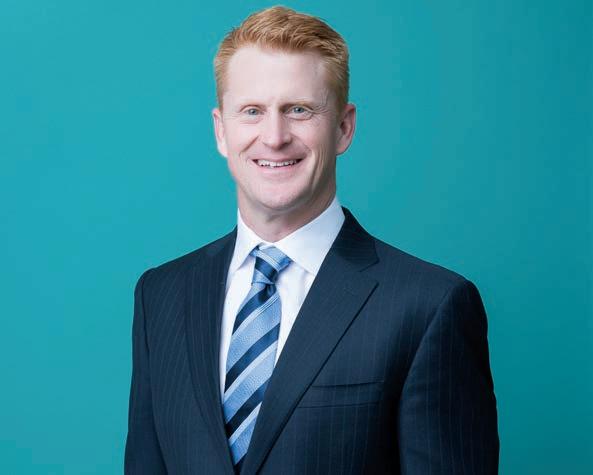
Mentorship is important to me. I have benefited from great mentors in my career. The impact they have had on my career cannot be measured. I still work with many of my mentors including former heads of BABC Jeff McLane and Karen Sessions. Jeff currently runs credit for all of Global Commercial Banking and Business Banking. I speak to him almost daily and continue to benefit greatly from his guidance. Karen is a Pacific Southwest Region Executive for Global Commercial Banking, and we still talk regularly.
Is there a fundamental difference in leadership between leaders who came from the sales side vs. credit/ underwriting?
Probably so, Charlie, but all of our senior leaders have both a credit background and client-facing experience. We need well-rounded leaders and senior associates that are empowered to speak for the bank, which enables them to be a trusted and valued partner to our sponsors, prospects, and
How closely are your commercial banking counterparts working with your group to transition clients to ABL structures?
Our BABC originations team has defined routines with our banking partners to go through the bank’s pro-rata book looking for opportunities where we can be helpful. Our BDOs are typically familiar with the bank’s cash-flow structure borrowers and have
established relationships with management teams well in advance of a potential transition.
Do you foresee more consolidation in the non-bank vs. bank ABL market?
Not in the near term. It is a challenging M&A environment for all sectors. Longer term, I would expect to see more regional
bank consolidation driven by the need for scale to improve efficiencies and drive technology spend.
What’s the fundamental difference between being a team leader and running a division?
I don’t find the jobs all that different. It still comes down to the people on your team and how you set and communicate priorities. I do have a broader scope running the division and get pulled in a few more directions, but ultimately still try to define what are our objectives and work with my team to lay out a plan to accomplish those priorities. I am extremely lucky to have a seasoned and talented leadership team, whom I lean on heavily.
Well, not sure I can quantify the impact to my career, but some form of exercise is part of my daily schedule. For me, I am almost exclusively a morning workout person. I enjoy the routine and feel like it helps put me in right frame of mind before the workday starts. But I have definitely slowed down over time, and the intensity of my workouts has been replaced with a goal of being consistent.
Mentorship is important to me. I have benefited from great mentors in my career. The impact they have had on my career cannot be measured. I still work with many of my mentors including former heads of BABC Jeff McLane and Karen Sessions. Jeff currently runs credit for all of Global Commercial Banking and Business Banking. I speak to him almost daily and continue to benefit greatly from his guidance. Karen is a Pacific Southwest Region Executive for Global Commercial Banking, and we still talk regularly. Additionally, I have many current teammates that have been and continue to be important to my development. These are relationship that I treasure and one of the reasons I enjoy my job. In terms of me being a mentor, I try to always find the time to invest in the next generation of bankers. It is something that I enjoy.
We continue to invest heavily in our business on the tech front to automate processes and streamline client reporting. We are also focused on exploring how we can better use the bank’s data to assist in our prospecting efforts and decision making.
Lastly, tell us something you are worried about that the rest of the market has yet to figure out.
Overall asset quality remains strong and management teams have navigated the volatility well with strong balance sheets. However, we are watching closely certain sectors and have seen inventory levels generally building across the consumer
and retail portfolios. Holiday season sales will be interesting and important for some of our borrowers.
Charlie Perer is the co-founder and head of originations of SG Credit Partners, Inc. (SGCP). In 2018, Perer and Marc Cole led the spin out of Super G Capital’s cash flow, technology, and special situations division to form SGCP.
Perer joined Super G Capital, LLC (Super G) in 2014 to start the cash flow lending division. While there, he established Super G as a market leader in lower middlemarket second lien, built a deal team from ground up with national reach and generated approximately $150 million in originations.
Prior to Super G, he co-founded Intermix Capital Partners, LLC, an investment and advisory firm focused on providing capital to small-to-medium sized businesses. He graduated cum laude from Tulane University. He can be reached at charlie@sgcreditpartners.com.

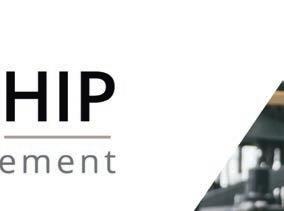



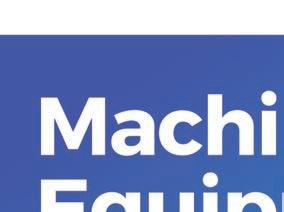



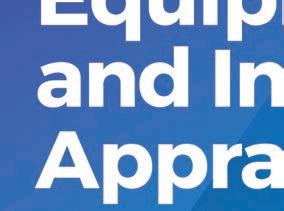




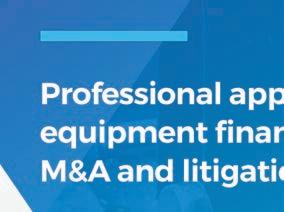
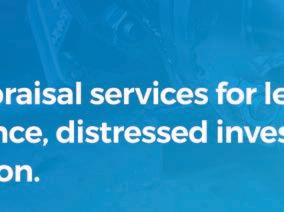


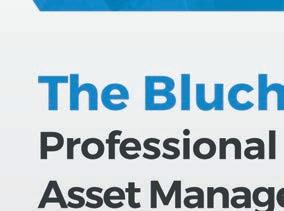


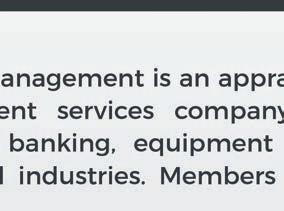

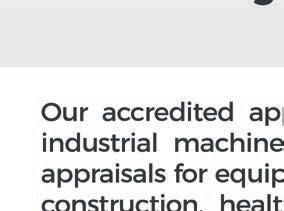
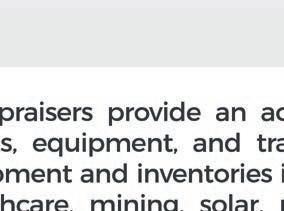
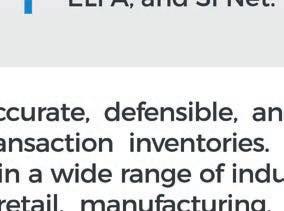
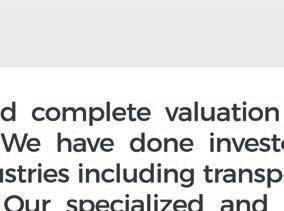








Given the relatively low levels of outstanding loan balances and the macro-economic environment over the past couple of years, the number of borrowers/loans that have ended up going into ‘workout’ have been few and far between. PKF Clear Thinking executives provide details on what is needed for a workout to succeed for both lender and borrower.

Irrespective of whether we are in a recession or not, there is almost no debate in our industry that borrowers currently have greater levels of outstandings. Consumer spending is shifting/decreasing, and there is a growing consensus that lenders are going to have to take a harder look at their borrowers and their near-term performance. With higher outstandings and a more challenging business environment, there is a lot less room for error than there has been over the last two years. It is very likely that we start to see an increasing number of deals that will end up in workout. Not to say that every deal that ends up in workout will be easily turned in the right direction, but there are a few things that the secured lender should keep in mind to hopefully make a difficult process less so.
As with anything, there are exceptions, but, for the most part, we find that lenders pride themselves on not having lots of deals in workout. That being the case, the number of internal resources with lots of workout experience available is quite small, even to the largest of shops. This is especially true over the last couple of years, where many folks who had workout experience are no longer serving in that capacity as workouts in general have declined significantly since the end of 2020. And while there are still some very experienced workout folks employed in the lending community, quite commonly they are being pulled in many different directions and simply cannot provide the amount of attention and focus that is needed to ensure a smooth and successful process. Hiring a dedicated professional that not only can be involved in the dayto-day needs of both the lender and borrower, but who also likely carries with them decades of experience in successful workouts, is something that should be seriously considered. Not only does the third-party professional bring significant expertise/experience in dealing with workout situations, but they also bring an unbiased opinion as to the issues at hand and can quickly and clearly identify the best path forward.
With almost two decades of helping clients and their lenders through some pretty difficult situations, we can honestly say that, while no two situations are the same, they do follow certain patterns and themes (especially in a given economic cycle). Understanding the patterns and leveraging the lessons learned from each successive client, successful turnaround professionals can fine tune their approach and methodology to each unique situation and can bring a great wealth of possible successful strategies to bear. Turnaround professionals also bring strong existing professional relationships that can be utilized to access additional/supplemental capital, assist with asset disposition, real estate services, and brand/asset valuation services.

By leveraging the experience, industry knowledge, and other resources, a customized strategy can be put together that considers all the strengths and opportunities that a given borrower possesses, and then over time works toward a solution that gets both parties back on solid footing. Whether it is liquidating ineligible inventory, cutting expenses, or negotiating with vendors for better terms,

having someone involved who has successfully employed these strategies (and many others) not only allows for a better outcome, but one that likely occurs much more quickly.
While there are many obstacles that will need to be navigated during the workout process, in our experience, one of the greatest challenges to any successful workout process is a limited amount of time. Unfortunately, in the realworld, borrower and lender are rarely in the position where they have all of the time that they would want to be able to effectuate the level of change necessary for a successful workout. There are many pressures, both internal and external, when it comes to determining just how much time a borrower should be given to effectuate their workout. As a turnaround professional, you will rarely hear us say that a borrower has been given too much time to improve their position. That being said, providing too much time, paired with too few parameters/guard rails on the process, can certainly put the lender and borrower in a worse position.
One of the biggest reasons outside professionals are often brought in to assist with workouts is that they are usually noted for the speed in which they can understand and address difficult situations. The reason outside professionals are able to move quickly is actually somewhat counterintuitive, in that we are able to slow things down and create time to come up with a plan and be able to execute. So many times, when we are brought into a situation, the borrower and lender are facing many challenges, which are almost impossible to address all at once. As the old saying goes ‘when eating an elephant, take one bite at a time’. Which is why there needs to be a plan in place that prioritizes and addresses the most impactful issues as quickly as possible, and then addresses the less impactful items as appropriate. We find that this is a good way to move quickly while creating the time necessary to address all the issues at hand. This is where having a great deal of patience
will ultimately pay off because the more time there is to understand and address the issues at hand, the more likely the outcome will be successful.
Clear and concise communication, and a certain level of trust are all requirements for successful outcomes. So many times, when we are brought into a situation, both lender and borrower have become “fatigued” with one another and there are likely some perceived biases/issues that can hinder a successful process. As turnaround professionals, one of our first orders of business is to start to build a level of trust between all constituents involved.

One of the easier ways to build trust is to approach the situation as a partnership. In order for the workout to be successful, all the constituents (lenders, ownership, management team, etc.) need to be on the same page and working towards a common goal. For whatever reason, in many of the challenging situations that we are involved in, both borrower and lender tend to take a very guarded approach with one another, and communication is on an as-needed basis. Our approach in these situations is to schedule regular update calls and provide as much relevant information as we possibly can. That way, any issues are being addressed on a proactive basis and there is no reason for knee-jerk sorts of reactions when something comes up unexpectedly.
If lender and borrower cannot get to a place of trust between them, the likelihood of a successful workout process is much lower, which is why in our role as advisors, we typically serve as the central point of communication. This works well in a couple of ways. First, given the experience and expertise of turnaround professionals, we understand where each party is coming from, what they really need out of a given situation, and can help bridge any gaps in expectations. Second, we are then able to set appropriate expectations, and ensure execution. One of the most common challenges we see between lender and borrower is that
were set very high and ultimately the borrower was not able to execute. By stepping back and setting expectations at reasonable levels (under promise), and then day-in and day-out executing to those levels or beyond (over deliver), a level of trust starts to grow which allows the process to move along much more quickly and successfully.
Pat Diercks is a partner with PKF Clear Thinking. He has over 18 years of experience as a consultant in the turnaround/restructuring arena dealing primarily with companies in the consumer product manufacturing/ distribution, staffing, metal products, manufacturing and retail industries. He has led/participated in numerous assignments related to cash management and operational performance improvement, as well as frequently serving as financial advisor to various constituents in bankruptcy proceedings. He is a Certified Turnaround Professional (CTP) and Certified Insolvency and Restructuring Advisor (CIRA).
Joe Marchese is a partner with PKF Clear Thinking. He has over 25 years of experience consulting in the accounting and financial operations arena. His expertise includes all areas of business planning, cash management and financial reporting. Marchese has assisted clients in the telecommunications, roofing/construction, disaster recovery services, consumer product, wholesale distribution, manufacturing, and retail industries with outof-court restructuring as well as Chapter 11 bankruptcies. As part of these assignments, he has held various positions including CRO, interim CFO, interim VP of finance, and interim controller positions. He is a Certified Turnaround Professional (CTP).
expectations
Clear and concise communication, and a certain level of trust are all requirements for successful outcomes. So many times, when we are brought into a situation, both lender and borrower have become “fatigued” with one another and there are likely some perceived biases/issues that can hinder a successful process.








Factors discuss what surprised them in 2022, California’s disclosure laws, rising interest rates, the move from ABL to factoring and what they expect 2023 will bring.

The Secured Lender: Have you diversified your product line during the past year? Or plan to in 2023?

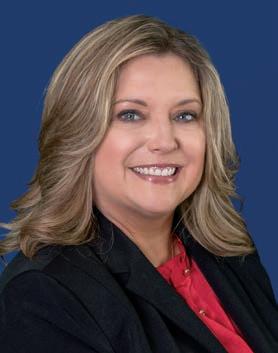



Dickens: Our product line has stayed consistent in the past year, and we expect it to remain the same in 2023. We expect our growth to be organic and from the industries which we already serve. We are however targeting expansion into new geographies both inside and outside of the USA and we are opening up Sallyport UK in Q1 2023. With regional variations we would expect to see some potential offshoots in terms of new products which may be specific to each environment. We know where our strengths lie as a business and we focus on those, if a client is seeking a product or service we cannot offer, we will utilize one of our many funding partners to put together a complete package.


Efron: We continue to offer a full range of factoring products to serve the marketplace. From traditional AR-only non-recourse factoring all the way to credit facilities that include also lending on other assets such as inventory, M&E, intellectual property and real estate. We also offer recourse factoring, which has been very positively received in the marketplace for the last few years.


Franz: Culain Capital Funding is in our first year of business. We are a privately held, specialty finance company focused on providing accounts receivable financing facilities from $250,000 to $5 million in credit commitments nationwide. With our originations, we have more than ever tried to stick with our knitting, meaning traditional factoring, and not underwrite receivables relating to progress billings or medical billings. We are focused on the quality of the accounts receivable, the account debtors and the companies that we feel can make it through an economic downturn. The one industry that we have considered frequently, and that we have staffed up accordingly with the proper expertise, is the funding of government contractors. We feel that if we properly mitigate our risks, these prospects will provide us with growth opportunities and differentiation from the competition. We are routinely approached by companies with complex financing needs, and we recognize that we will need to complement our factoring solution with the addition of asset-based lending facilities.
Merritt-Parikh: Yes, we continued to build out our junior revolving lines of credit for factors and lenders into our product base of participation funding and senior lines of credit. In the third quarter of 2022, we also launched a new division, Lead Line, focused on deal sourcing for our lending partners. For 2023, our plan is to continue to expand that division and possibly add another ‘value add’ division that will further help the lenders we work with grow their platforms even more.
Yang: Rosenthal & Rosenthal has been diversifying product lines for several years now. Most recently, we launched Pipeline, our newest division focused on providing growth capital solutions exclusively for high-growth direct-to-consumer and e-commerce brands.
Diversification is also taking place within our established divisions, as we continue to adapt our offerings to address our clients’ changing needs. For example, Rosenthal created a dedicated export factoring team this year to enhance the capital solutions we have in place for our clients and prospective clients.
What surprised you in 2022 in the factoring industry?
Dickens: The long-expected recession and flurry of bank exits did not materialize as we expected probably in late 2021. 2022 was more of a return to normal for the industry, and, certainly for Sallyport, we saw some solid organic growth in the portfolio which continued the trend from 2021. We expect that 2023 will see more of a correction in the markets and we expect 2023 to be a strong year for the factoring industry.
Franz: While we knew interest rates would rise, we felt that the economy would cool down quicker. We need to be more vigilant in pricing our deals.
Efron: The two main things that surprised me this year were how significantly many large retailers missed in the indications they gave to their suppliers (our clients) at the beginning of the year in terms of how much product they would be ordering in certain categories. Retailers apparently didn’t have the ability to realize that most of the product categories that did extremely well in 2020 and 2021 during the pandemic would not continue to grow the way they did during those two years, namely products such as home textiles, furniture, kitchen appliances, etc., which were all the products we were purchasing in 2020 and 2021 while spending most of our time at home. The retailers’ miss created all sorts of issues for suppliers and their lenders (factors included) as inventory positions increased significantly and created challenges at the cash-flow level and the warehousing level.
The second issue that surprised me this year was how much the Fed raised rates. Prime was 3.25% at the beginning of the year and is ending 2022 at 7.50%. I truly never imagined we would see such a sharp increase in just one year. This will create challenges for companies, both large and small, to be able to absorb their financing costs. We will see the effect of this throughout 2023.
Merritt-Parikh: There have been so many changes in the past year that factors have had to contend with, such as gearing up after the pandemic with clients and employees, garnering capital and resources waiting for a credit wave that was once again delayed in expectations, seeing ever-increasing rate hikes and higher cost of funds while competition remained high, experiencing more instances of fraud, identifying process and control breakdowns after hiring more people that were trained remotely or new to the space, losing equity
or seeing other capital/bank tightening, and more. I don’t feel like any of it’s a surprise individually, but it’s definitely a lot for factors to deal with all at once in a very short timeframe – the amount of continued change.
Yang: As much as it has been in the works for a few years now, I am still surprised that the regulators managed to push the CA disclosure law to take effect this year considering all that has been crowding our world and the ongoing bigger challenges businesses are facing. It’s also interesting that the regulators could not understand that a non-borrowing factoring arrangement is simply not a lending product and are forcing factors to disclose an APR that’s just not applicable. (Editor’s Note, please refer to The SFNet Guide to the California Commercial Finance Disclosure Laws and Regulations available on our website www.sfnet.com/home/industry-data-publications/ advocacy/california-compliance-guide.)
Another standout is the longer, extended time it takes to perform due diligence. Between hybrid and remote field exams, we’ve hit some record-long exams this year and there are no indications that this dynamic will change much in the near term.
Factors often say they can offer more flexibility and have strong relationships with clients. Can you explain more? How often do you check in or visit clients? What is your company’s approach?
Dickens: We look at every new factoring facility as the start of a new relationship and every one of those relationships is unique and different. For some clients, they are factoring for growth and their goal from the relationship is maximizing available working capital; for other clients they could be factoring as they are too small or new to have a full-time accounts receivable department and so they utilize our facility as a true extension for their business, seeking advice on credit worthiness for existing and potential customers. Every entrepreneur and business have a different “why” which brought them to factoring and it’s our job as their finance partners to understand that and provide a bespoke solution for their business. Gaining that understanding starts with our sales team and the initial introduction; wherever possible and feasible our salespeople will endeavor to visit the business location and meet face-to-face. We have offices in Texas, California, and Canada; and salespeople coast to coast, so our geographic footprint helps bring us closer to our prospects and clients. Once the relationship is up and running, we will have our client relationship manager visit the client on-site 1-2 times per year, we find this helps for deeper and ultimately more mutually beneficial relationships in the long-term, clients are more open with us and speak to us about their successes and failures, which becomes both a client retention tool and a risk management control.
Efron: We maintain very close relationships with our clients. Account executives speak to them every week, and we also visit them very frequently. In addition to that, we factors have a “live” view into our clients’ businesses as every day we see how much they are shipping to their customers, we know how much they were planning to ship and/or how much they need to ship to break even, and we can monitor sales on a “live” basis. This allows us to react very quickly,
to speak to our clients when we see any early signs of a slowdown, to understand the reasons, how they are planning to address any issues and to be able to offer them the help they need during those times.
We also aim to become more than just the lender to our clients, and, in most cases, we can achieve a “trusted advisor” role, which is truly beneficial to our clients.
Franz: Our account executives are very hands on and in constant communication with our clients, which is critical as businesses face the challenges of rising interest rates, material costs and labor. Equally important for our clients is that our leadership team regularly taking a temperature check with our clients to stay out in front of any potential problems as well as identifying potential new opportunities.
Merritt-Parikh: Factoring companies are very close to the collateral and the businesses they finance. As a factor, it’s about the paper ultimately, but that means truly understanding how the billings work and what is needed to ensure completion and collection, while maintaining controls. To do that, often, factors build close relationships with their clients with ongoing discussions, sometimes on a daily or weekly basis depending on the transaction. Although not all factors perform field examinations or visit their clients, many do when the exposure is over a certain dollar or portfolio percentage amount, or if there is complexity in the nature of the invoicing or collection thereof.
Yang: Most days, it seems like our account executives talk to their clients more than they talk to their own families! I joke, but there is definitely a sliver of truth to this.
Many businesses benefit from building strong relationships with factors like Rosenthal that go well beyond the working capital support they receive. We often become part of our clients’ day-to-day operations and even serve as a sounding board for many business leaders.
Our positive impact on our clients’ businesses was even more evident in the last two years or so and has always been one of Rosenthal’s strengths. This hyper focus on maintaining constant communication and solid relationships with our clients has positioned Rosenthal well, not only to earn more business referrals, but also to set us up to develop more meaningful offerings to our clients. The Pipeline program that I mentioned before is a perfect example of this – it was incubated after our executive team heard from several of our direct-to-consumer clients that they required a different kind of financing that wasn’t yet covered by our existing ABL program. So, from that, Pipeline was born.
Are you seeing the use of technology in the factoring industry able to better serve clients and get them on board? Can you give examples of how it has evolved in recent years?
Dickens: We are not a technology driven organization and we typically operate using the tried and tested methods; however, use of technology can help reduce friction during the onboarding process; signing legal documents via DocuSign has eliminated the need for
printing, signing, and notarizing legal documents, then scanning over copies and mailing original legal documents back to us.
Following the COVID pandemic, it’s our default option now to have every meeting as a Teams or Zoom meeting where, although we can’t always meet face to face with prospect and clients, we are at least able to see each other’s face and have a more personal touch.
We retain an open mind when it comes to utilizing technology if it can help our business or clients in some way, but we certainly don’t want to use technology just for the sake of it. We tried to make our onboarding process more online and automated, and we found that prospects did not respond well to that; they much preferred the personal touch.
Franz: As a startup, we made a conscious decision to invest in the best accounting and factoring software available to effectively and efficiently address the complex business issues of our clients. The ability to have clients upload documentation and integrate with their accounting systems during underwriting allows us to quickly move through due diligence and execute their factoring facility timely. The same process holds true for funding requests, background investigations, and credit reporting so our decisions can be made in minutes rather than days.
Yang: Rosenthal developed an app to complement our online system a few years ago that’s been fine tuned over time. Clients can easily access their accounts 24/7 on their phone to get a snapshot of their position and their availability and request same-day funding. We look forward to continuing to explore how we can leverage new technology to make our clients’ day-to-day operations more seamless and efficient.
How are the California Disclosure laws that went into effect on December 9, 2022 impacting you thus far?
Dickens: We issued our first set of legal documents including the APR disclosure forms on the first day the legislation was implemented. It’s added some additional workload at the proposal stage and legal documentation stage, and we have added some internal controls around approvals for issuing term sheets/proposals for deals which fall within the scope of the legislation.
The SFNet Guide has been a great resource and we’ve utilized the sample disclosure forms provided by the SFNet to ensure we are adhering to the legislation. We expect to see other states follow California and over the medium-term there will probably be more legislation at the state and federal level. California specifically is a key market for us; we have an office in California and a significant portion of our clients operate from California, and it’s a $3.4TN economy – so complying with the disclosure laws is paramount for us.
Efron: We are complying with the California Disclosure laws and keeping a very close eye on what other states are doing.
Franz: Currently, we are not providing funding to any clients in California so there is no impact. We continue to monitor the
development of disclosure laws in California and other states and participate in the thought leadership offered by the SFNet so we can make the required adjustments necessary to serve clients in those markets.
Merritt-Parikh: We have several clients that are coming to terms with understanding the changes that need to be made internally, while others have chosen to stop doing business with clients located in California, so they don’t have to deal with the additional operational components. As this only went into effect recently, it’s too soon to see the actual impact of implementation, execution or what the penalties are for those that are not conforming to these new requirements.
How are rising interest rates affecting your capital structure and how are you dealing with an imminent factoring rate increase?
Dickens: Increasing interest rates are increasing our direct cost of our own banking facilities, however that is being offset with the increased interest costs for our clients. Almost all our facilities are on Prime plus pricing and so there is a natural hedge that, when our borrowing costs rise, so does the cost of borrowing for our clients. The pace and frequency of the recent rate increases have been quite surprising following several years of very low interest rates, and the Fed has certainly made up for its lack of activity with some very aggressive measures to get inflation under control.
We have added mezzanine debt into our capital structure to primarily support our growth plans, but this has had a secondary benefit in that it has also helped reduce our blended cost of capital which is helping us combat the overall rising interest rate environment.
Efron: Rising interest rates mostly affect our clients. Commercial factors charge a floating interest rate to clients, usually based on Prime plus an applicable margin. Obviously, this will create challenges for our borrowers, and we will need to work with them. In terms of factors’ capital structure, all the large commercial factors in the U.S., such as White Oak, carry a significant amount of equity on their balance sheets and as such higher interest rates have a positive effect on our income statements.
Franz: The cost of funds requires our continued attention, especially in a rising rate environment. We evaluate the pricing of each client relationship considering the risks we are taking and our cost structure. More importantly, we look to partner with lender finance companies with the expertise and understanding of financing a specialty finance company and the pricing of our factoring facilities.
Are you seeing more customers move from traditional ABL into factoring?
Dickens: From the midpoint of the year onwards we have seen several introductions from both traditional bank ABL and non-bank traditional ABL lenders The introductions are typically from businesses which are: (1) in a forbearance situation with their existing lender, (2) the existing lender is unable to support the business growth, for example,
the lender reduced the facility size in 2020/2021 and after a slow year the business has seen some return to normality with revenues bouncing back, in some cases the existing lender is not comfortable or able to return the facility to the previous size and so the business is looking for a lender who can generate more working capital or (3) businesses which may be breaching covenants or expected to breach covenants and the lender and the business have agreed to a mutual break-up. When we have clients moving from traditional ABL to factoring there is always the need to educate the client on what the differences are, as a factor we are usually closer to the account debtors than on an ABL facility and for most factoring facilities the account debtors will receive our Notice of Assignment; business owners can be apprehensive about our contact with account debtors however the fear is usually greater in theory than in reality; barring the few customers with ban on assignment clauses; most account debtors have no problem paying to and verifying for a factor. Once our facility is in place and running smoothly, business owners enjoy the flexibility we can provide and the lack of formal loan covenants which may be present with a traditional ABL facility. There are far more similarities than differences, and it’s our job to demonstrate that to our customers moving from ABL to factoring.
Efron: We are seeing some companies moving from commercial banks into factoring and expect to see many more this year. Once 2022 financial statements are issued, we expect many companies to have to move away from banks. In 2020 and 2021 many companies had the benefit of the PPP loans creating significant “other income” on their income statements as these loans were forgiven, which helped many borrowers avoid showing losses on their financials. 2022 figures will not get that benefit for most companies, and hence we expect to see many opportunities to start relationships with previously banked companies.
We are starting to see banks tightening up. They might not be kicking people out yet, but when clients are going to the banks to ask for additional help, because they are holding more inventory and they need their inventory lines increased, they are getting more ‘No’s’ and rejection. That’s prompting middle-sized businesses to go out of the banking world and talk to alternative lenders. This is the time for factors to really take the extra steps to understand your clients’ businesses and their challenges and how they are dealing with them.
Franz: We have not migrated a client from ABL to factoring this year. We expect demand for ABL to continue to increase with manufacturing returning to the U.S. and companies maintaining larger inventory balances than in previous years. All the more reason for us to launch an ABL vertical soon!
Merritt-Parikh: In general, we are seeing more bank clients moving to factoring versus ABL due to being able to close and fund quickly in comparison. For those commercial lenders with both ABL and factoring groups, we have also noted an increase in starting companies out in their factoring division then moving them to ABL later after some in-house performance can be evidenced.
Yang: Not so much. But we have seen more companies using factoring services for the first time. The challenging retail climate, the associated credit risk, and the difficulties in maintaining and hiring staff have all played key roles in this trend toward companies pursuing factoring. More often than not, Rosenthal is able to offer our clients cost savings by serving as their AR and credit department, all the while improving their cash cycle and extending significant credit protection.
What do you think the supply chain impact will be in 2023?
Franz: Though supply chains are starting to untangle, the ongoing disruptions will continue well into 2023. The start of the pandemic saw unprecedented labor shortages and shipping backlogs that created delays for retailers and manufacturers. Labor shortages are still a huge issue and manufactures and distributors will build inventory to avoid the shortages they experienced last year.
Yang: Between the pandemic and inflation concerns, the supply chain slowdown continues to plague the retail sector in a multitude of ways. We’re still seeing labor and raw material shortages, port inefficiencies and freight cost increases, all of which were impacted from the shutdowns in ports in Asia and the ongoing West Coast labor dispute. These complicated factors have led to a major ripple effect across the globe and have created a tremendous amount of uncertainty among importers. While we all hoped the supply chain would normalize in 2022, we’re now looking ahead to 2023 for some glimmer of hope. But we should expect to see much of the same in terms of supply chain challenges, in the coming year, certainly at least until the middle of 2023.
Dickens: I believe 2023 will see a mild recession, the labor market remains tight and there may be upward pressure on wages, which could lead to even more inflation. If the inflation remains supply side driven which it has been in 2022 with energy price shocks, then a more settled energy market outlook may see prices and inflation normalize providing some relief to the American consumer. 2023 should be the peak year for interest rates and I expect the US dollar to remain strong in the currency markets. Let’s hope that the high interest rates can get inflation under control by the end of 2023, and the Fed doesn’t overshoot with their rate increases and raise interest rates more than is needed. Thankfully, at the time of writing this in late December, it appears the Fed is reducing the magnitude of their interest rate increases and we may see one or two rate increases of 0.25% in the first half of 2023.
The expectation of a mild recession and rising interest rates, offers a very favorable environment for factors and asset-based lenders. There will be some attrition in the capital markets and businesses may be looking to new sources of financing as they navigate a tricky economic environment. After several years of low interest rates and massive government intervention, a return to a traditional credit cycle environment should be welcomed by factors and 2023 should be a fruitful and productive year for factors and the wider factoring industry.
Efron: 2023 could be a very challenging year because of the significantly higher interest rates we are seeing now. This could affect our clients in two very important fronts: Not only will they result in higher financing costs for them; but also – if the Fed is successful –might result in a slowdown in the economy and higher unemployment rates, which would drive demand and sales lower.
Franz: Commercial and community banks are contracting, resulting in less credit being available for businesses. Business owners are becoming more aware or directly experienced the unscrupulous behaviors of predatory lenders. Factoring companies will see increased opportunities, but with that comes the possibility of great fraud and losses. It’s a double-edged sword.
Merritt-Parikh: Factoring and ABL should have more opportunities as the ‘credit wave’ everyone expected last year and then earlier this year seems to have finally started. Pipelines are already building. With that, though, comes increased client concerns in the existing portfolios requiring heightened focus and vigilance on underwriting, monitoring and processes. Additionally, fraud has increased over the past few months and is expected to continue moving into 2023. Someone once said, “If you don’t think there is fraud in your portfolio, you just haven’t looked hard enough,” and unfortunately, I think that would be a good quote to remember in the coming year. Also, capital will be a high focus point next year as lenders have started tightening (lowing lines, concentrations and eligibility, increasing rates, requiring additional equity or capital). I think that means the other famous quote, “Always Be Closing,” will now be “Always Be Raising Money…” not that the acronym fits in this case, but you get the gist.
Yang: While the latest reports show that inflation may finally be slowing, consumer prices are still climbing, as are interest rates. Supply chain challenges continue to disrupt the flow of products from overseas and delay shipments to retailers and customers around the country. There are few, if any, indications that any of this will drastically change in 2023. We always tell our clients that in uncertain times like these, it’s important to balance innovation with delivering value, while also paying close attention to diversifying supplier relationships and distribution channels. Any company that is not carefully managing the increased costs of doing business in this volatile market will face some difficulties in 2023. If nothing else, this complex and challenging environment is keeping us on our toes and very busy!
The SFNet Market Pulse is an economic report that highlights emerging macroeconomic trends likely to affect secured finance and asset-based lending over the near term. The report, underwritten by a grant from the Secured Finance Foundation, is designed to help lenders stay up-to-date on the most important macro-level economic and policy trends driving commercial credit demand, credit supply, portfolio performance, and financial stress. The SFNet Market Pulse is produced by Keybridge, a boutique economic research consultancy comprised of economists and public policy experts based in Washington, D.C.

Though U.S. GDP bounced back during the second half of the year, underlying economic conditions remain worrying. Consumers continued to spend, but credit card debt is up sharply and the savings rate is at a 17year low as households struggle to maintain spending as prices increase. The labor market remains strong, but the Fed’s goal of driving down inflation is likely to push unemployment up. Elsewhere, the housing market is softening, financial markets are volatile, and the global economy is slowing. Despite these mounting economic headwinds, the asset-based lending industry remains solid, with historically strong portfolio performance and high expectations for business demand. The Q3 SFNet Survey finds that many lenders feel generally positive about the near-term outlook for the industry but recognize the looming challenges. Notably, asset-based lending and factoring perform well in a challenging economic climate, providing a lifeline of working capital at times of financial stress.
Responses are converted to a 100-point scale where a “0” indicates a decrease/decline, a “50” indicates that things are expected to stay the same, and a “100” indicates an increase/improvement.
The U.S. economy grew at an annual rate of 2.9% in Q3 of 2022, exceeding expectations. Net exports were the main driver of growth, as the trade deficit shrank over Q3 due to lower demand for imported goods. Consumer spending was also a positive contributor to GDP.
Despite the positive GDP growth in Q3, economic challenges remain. A tight labor market might typically be cause for optimism, but with rapid wage growth and persistent inflation, it also means that the Fed will need to keep raising rates to cool the economy. The manufacturing sector may also begin to slow, with the manufacturing PMI now below the 50 threshold for a contraction. These developments suggest that recession risks are on the rise.
Should a recession occur, it may not be severe. The strong
labor market and generally moderate household debt levels should be mitigating factors. But, simultaneous interest rate hikes by central banks around the world could compound one another and slow global economic growth.
Over the next six months, three themes are worth watching: Persistent Inflation. At 7.7% YoY, headline CPI inflation declined for the fourth consecutive month and beat expectations, but inflation remains far above desired levels. Core inflation only dropped slightly, with services and shelter costs continuing to rise at a rapid pace.
Fed Tightening Weighs on Growth. As the Fed continues to fight inflation, it has raised the federal funds rate and reduced its balance sheet at the fastest clip in decades. Fed tightening is designed to cool the economy and is not painless. Indeed, it has already begun to weigh on construction, housing, and equity markets.
Growing Recession Risks. With high inflation and rising interest rates, the consumer saving rate has plummeted to less than half its pre-pandemic level – suggesting that a pullback in spending may be around the corner. Meanwhile, the war in Ukraine is slowing global economic growth. Worsening international economic conditions could push the U.S. into a recession in 2023.
The U.S. economy expanded at a 2.9% annualized pace in Q3 2022, the first increase following two quarters of decline to start 2022. GDP growth was boosted chiefly by strong net exports, in addition to positive consumer spending.
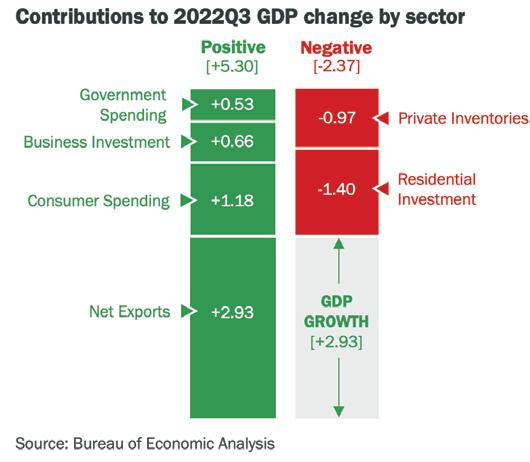

In recent months, the top question on the minds of many business leaders has been “are we headed for a recession?” After two consecutive quarters of contraction, it appeared a recession was imminent. However, while growth in Q3 was somewhat reassuring, most economists remain on “recession watch” entering 2023.
The Business Cycle Dating Committee of the National Bureau of Economic Research (NBER) officially dates recessions by evaluating data on employment, industrial production, real personal income, real consumer spending, and real wholesale and retail sales. To assess the likelihood of a near-term recession, it helpful to assess a range of data that align with NBER’s methods, particularly those that have been reliable leading indicators of past recessions.
Keybridge’s recession monitor presents ten industry-relevant indicators that have a strong track record of predicting a recession with varying lead times. As of early December, five of the ten have exceeded the threshold Keybridge considers “recessionary.” While there is no hard-and-fast rule, our research indicates that when half or more of the indicators are in the red, the risk of a recession occurring in the next 6–12 months is high.
Several factors are driving this result, most notably the high rate of inflation that is causing the Federal Reserve to raise interest rates, which in turn is negatively affecting the housing market as well as business investment plans. However, it is worth noting that most of the red indicators have long lead times and most of the near-term indicators are green. This suggests that a recession, if one occurs, is more likely to begin during the second half of the year. This makes


intuitive sense, as the Fed’s rate hikes take time to spread through the economy — indeed, the labor market remains quite healthy according to most indicators.
It is also worth noting that, unlike in previous business cycles, consumers are still benefitting from about $1 trillion in extra savings due to the federal response to the pandemic. Even though the personal saving rate has fallen close to an all-time low, the remaining savings could be enough to cushion consumers, avoid a spending decline, and stave off a recession. So, it is possible that “this time is different” — but the ten historically reliable indicators remain instructive.


Retail Trade. Despite high inflation, retail spending has been resilient throughout 2022, with total retail and food services sales rising 1.3% from September to October and increasing by 8.3% YoY. As supply chain disruptions have slowly eased, retail inventories have recovered from the lows of last year. Spending growth has been steady, but excess inventory is now a challenge for many retailers, with some turning to sales and promotions to clear shelves.
posted solid growth in October but may begin to signal a slowdown in early 2023.
Wholesale Trade. In recent months, inventory growth has outpaced sales growth, as supply chain disruptions eased enough for wholesalers to begin replenishing inventories. Declining sales growth could lead to an “ inventory bullwhip,” where suppliers build higher inventories just as demand cools. As such, wholesalers and retailers face a similar challenge. In a silver lining for the broader economy, higher inventories should alleviate some inflationary pressures.
Housing. After the housing market boom in 2021, rising mortgage rates have caused a slowdown in recent months. The share of active listings with price drops jumped to its highest level in years while housing starts have fallen sharply. Consequently, homebuilder sentiment in the NAHB Housing Market Index has fallen every month this year. With no rate cuts in sight as the Fed continues to battle inflation, there is little hope for a quick turnaround and construction employment will be a metric to watch closely in 2023.
Manufacturing. Global economic headwinds may be starting to hit the manufacturing sector. The Manufacturing Purchasing Managers’ Index has fallen steadily from its early 2021 peak and is now below 50, suggesting the industry is contracting. Manufacturing capacity utilization remains elevated by historical standards but has flatlined in recent months after peaking in April. Manufacturing shipments and new orders

Russia’s invasion of Ukraine, persistent inflation, and central bank tightening have crimped global growth this year. The IMF’s latest World Economic Outlook projects lower growth across most countries, with global growth slowing from 6.0% in 2021 to 3.2% in 2022— a downward revision of 0.4 percentage points from the April forecast. Compared to 2021, growth expectations for 2022 are sharply weaker in Russia, and somewhat weaker in China, Europe and the U.S., but many developing countries are also slowing.
Due to Europe’s heavy reliance on Russian energy, a prolonged and uncertain invasion of Ukraine carries potentially dire consequences for the continent. Furthermore, China appears to be entering a structural slowdown, which has been exacerbated by recurring COVID lockdowns. China’s property sector has vastly overbuilt, taken on substantial

debt, and is now facing slowing demand and plummeting consumer sentiment. With high youth unemployment, China faces a weakening economic outlook. Meanwhile, several emerging economies are feeling the effects of a global slowdown and central bank tightening measures.

Russia’s invasion of Ukraine has spurred one of the largest energy price shocks in decades. The rise in prices has been most severe for countries that depend on Russian oil and natural gas, but the ripple effects have rattled economies across the globe. As a share of their total GDP, spending by OECD member nations on energy has soared to almost 18% in 2022 -- the highest share since 1981 and nearly double shares from recent years. A prolonged gas shortage would also weigh on future growth, reducing global and OECD Europe growth by about 0.5 and 1.4 percentage points, respectively. European industries that are heavily reliant on natural gas for production, such as metals and chemical manufacturers, are confronting existential threats since many cannot afford to operate and have been forced to shutter.
Looking ahead, worldwide energy challenges are unlikely to abate anytime soon. Though European nations have been able stockpile natural gas supplies in preparation for the 2022-23 winter, the OECD predicts there is a high risk that Europe will face difficulties securing sufficient energy supplies for next winter.
Major central banks, including the U.S. Federal Reserve, European Central Bank, and Bank of England, have all been enacting large interest rate hikes to combat historic levels of inflation. In a highly integrated global economy, however, some economists are warning that simultaneous, uncoordinated rate hikes could lead to a worse than anticipated and unnecessarily severe global recession.
Indeed, U.S. Secretary of Treasury Janet Yellen echoed these concerns, acknowledging that “macroeconomic tightening in advanced countries can have international spillovers.” She added that emerging markets and developing countries are most exposed to such spillovers, due to high existing debt burdens and exposure to financial pressures due to interest rate hikes. A particular concern is that the strong dollar is representing a “double whammy” for emerging market countries.
A key factor to watch will be how central banks coordinate around monetary tightening, as they work to lower inflation without prompting a deep and painful global recession.
As economic headwinds mount, banks are reporting weaker demand for loans. The Federal Reserve’s October 2022 Senior Loan Officer Opinion Survey on Bank Lending Practices indicates that overall business loan demand from both large and small firms
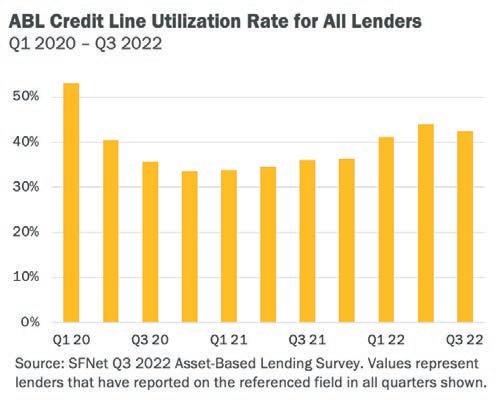
dropped. Indeed, a net 9% of banks reported weaker demand from large and medium firms for commercial and industrial (C&I) loans in the October survey, the first drop in net demand since the Q2 2021. Demand for loans fell further for small firms, with a net 22% reporting weaker demand, the first drop in net demand since Q1 2021. Further signaling softer demand, a net 12% reported decreased inquiries from potential borrowers seeking new or expanded credit lines over the past three months. Notably, softer demand in Q3 2022 follows several quarters of strong demand, making it a bit unclear if this dip is temporary or the start of a more persistent downward trend.
Identifying the top reasons for softer demand, banks noted decreased need for financing inventory, investment in plants and equipment, and mergers and acquisitions (right). Shifting inventory needs may be contributing to weaker loan demand for some banks, but every bank that reported stronger demand pointed to increased needs to finance inventory as a source of demand. These diverging perspectives on inventories may reflect the current state of supply chains, where disruptions have generally eased over the course of 2022 but persist in some regions and sectors.
The Q3 2022 SFNet Composite Confidence Index for new business demand (above) hit a multi-year high, pointing to a strong market for asset-based lenders in Q4 2022 and beyond. As other credit markets become less attractive due to rising interest rates, assetbased lending has become an increasingly attractive alternative and demand should stay strong. Expectations for credit line utilization (above) dipped in Q3 2022 but remain in generally positive territory. The fall in expectations parallels a slight dip in the utilization rate (right), breaking six consecutive quarters of steady growth but the rate remains near historical levels. Overall, demand and utilization trends indicate that the industry is solid even as headwinds in other sectors build. In this context, it is worth noting that secured finance is an all-weather industry. Both asset-based lending and factoring perform well in challenging economic conditions by providing vital working capital during times of financial stress.
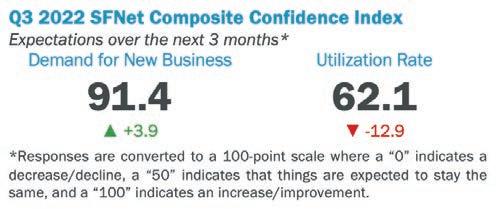
The October 2022 Senior Loan Officer Opinion Survey revealed a tightening of lending standards by banks of all sizes. Every bank that tightened lending standards cited a less favorable or more uncertain economic outlook as an important reason for tightening, and 57% cited it was a “very important” reason. Similarly, reduced risk tolerance and worsening of industry-specific challenges
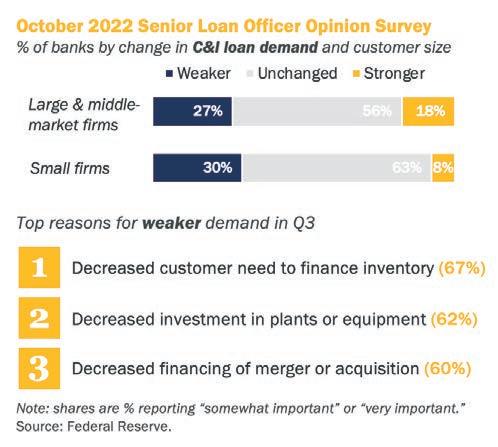
were also top reasons for tighter standards. Banks that eased standards often cited more competition with other lenders as a reason for easing. Consistent with generally tighter standards, a net 14% of banks reported lowering the maximum size of credit lines for large firms and a net 20% reported more stringent collateralization requirements.
The Q3 2022 SFNet Asset-Based Lending Survey revealed growth in total commitments for the 6th consecutive quarter (right). Commitments grew by 11.2% compared to the same quarter in 2021 and by 3.1% compared to Q2 2022. Sixty-one percent of respondents reported increased commitments from the past quarter, but a larger share of respondents reported lower commitments in Q3 2022 (33%) than in Q2 2022 (21%). Continued monetary tightening by the Federal Reserve should continue to slow growth in loan supply.

At the November FOMC meeting, the Federal Reserve Board of Governors voted unanimously to raise the federal funds rate by another 75 basis points--the fourth jumbo rate hike in a row. During the FOMC press conference, Chairman Powell warned that a sustained period of low economic growth is necessary to bring down inflation. Indeed, he stated “At some point it will become appropriate to slow the pace of increases…Even so, we still have some ways to go, and incoming data since our last meeting suggest that the ultimate level of interest rates will be higher than expected.”
The outlook for monetary policy in 2023 will likely include higher interest rates, but several factors are worth monitoring that could compel the Fed to take its foot off the brake before inflation has returned to pre-COVID rates. First, the Fed may choose to target an
inflation rate above 2%, allowing it to “declare victory” earlier than markets might expect. However, this could create credibility issues for the Fed and un-anchor inflation expectations — a potentially dangerous precedent that may be difficult to unwind. Second, monetary policy is a blunt instrument and the full slowing effects of rate hikes can take several quarters to materialize. As such, the Fed may pause its hikes before inflation has fallen back to its target. Finally, other major central banks are also tightening, which could compound and lead to financial market turmoil and/or a deeper recession.
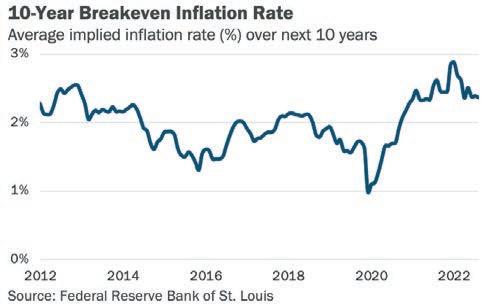
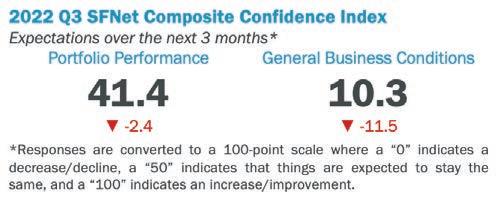
Portfolio performance remained strong through Q3 2022 but is likely headed for tougher times. C&I delinquencies inched up to 1.1% while charge-offs rose to 0.16%, but both measures remain relatively low by historical standards. Similarly, respondents to the Q3 SFNet ABL Survey report that non-accruing loans as a share of outstandings remained well-below pre-pandemic levels (right), dropping to 0.2% after a slight increase in Q2. It is unclear, however, if such strong performance can last. Indeed, the SFNet Composite Confidence Index indicated that lenders generally expect portfolio performance to dip. This drop may reflect a recognition that portfolio performance can only worsen after several historically strong quarters. It could also relate to the expected decline in general business conditions. In any case, portfolio performance is a key area to watch in 2023.
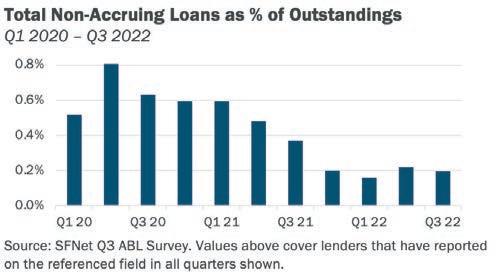
The October 2022 Senior Loan Officer Opinion Survey indicated that loan spreads widened for both large (below) and small firms. This was the second consecutive quarter that firms reported increased spreads for both large and small firms. Net interest income rose for the fifth consecutive quarter at FDIC-insured commercial banks and savings institutions (right), increasing 11.6% QoQ in Q3 2022 and 25.4% YoY, the highest YoY increase on record. Despite such positive results in Q3, FDIC Acting Chairman Martin J. Gruenberg was cautious in his outlook for the future, noting “the effects of inflation, rising market interest rates, and continuing geopolitical uncertainty will continue to challenge bank profitability, credit quality, and loan growth.”
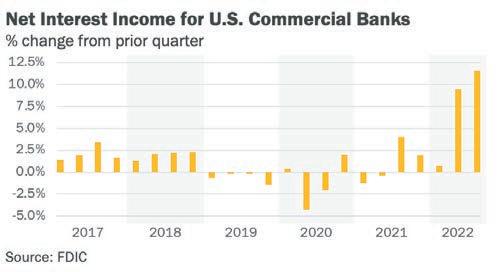

As the lending industry emerges from a period of strong performance, stresses are starting to rise. Over recent months, consumer spending has been resilient, but persistently high inflation has narrowed the gap between spending and income. The personal savings rate dropped to 2.3% in October, the lowest rate since 2005, credit card debt is rising rapidly, and consumer sentiment is hovering near an all-time low. There are some silver linings though. A strong labor market may complicate the Fed’s efforts to tame inflation, but it also means that jobs are plentiful. Additionally. household finances remain on generally solid footing.

Keybridge assessed hundreds of high-frequency indicators from a variety of sources covering all major segments of the US economy and identified a set of 10 that have a good track record of independently anticipating a US economic recession without an excess of false signals. For each indicator, Keybridge identified a threshold that the indicator has historically crossed in the months prior to each of the three most recent pre-COVID US recessions (without false signals). Each indicator is assigned a color based
on its recent behavior relative to its particular threshold: “green” for when the indicator is safely above (or, for the C&I loan delinquency rate, below) its threshold, “yellow” for when it nears its threshold, and “red” for when it has crossed its threshold at least once within its typical lead time. For example, an indicator with a six-month typical lead time that crossed its threshold one month but rebounded the next month would remain “red” until six months had elapsed without re-crossing the threshold.
Refinitiv’s Maria Dikeos provides an analysis of the capital markets in 2022.

Following a relatively strong, or, at the very least, optimistic, start to the year, the 2022 debt capital markets took a bearish turn in the second half, a shift from which the US loan market was not immune. Through the middle of December, US syndicated loan volume totaled US$2.5trn, trailing full year 2021 totals of nearly US$2.9trn. More significantly, quarter over quarter issuance steadily declined between 2Q22 and year end.
AIn turn, both leveraged loan and high-yield bond volume tumbled. At less than US$840bn year-to-date, leveraged loan issuance is down 36% compared to full year 2021 totals and high-yield bond volume was off almost 80% compared to record totals logged one year prior (Fig. 1).
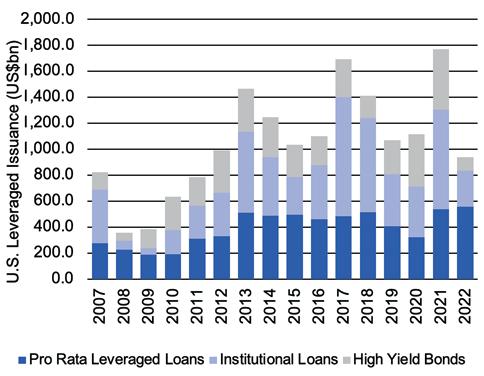
Most of the shortfall came amid top-line market concerns around stubbornly high inflation figures, growing recessionary pressure and ongoing geopolitical uncertainty that threatens energy costs heading into winter.
Globally, central banks adopted a more hawkish tone. In the US, the Federal Reserve raised interest rates six times in an effort to tame inflation. In the wake of macro reverberations, the loan market once again showed that technicals matter.
From a demand standpoint, liquidity largely remained in place, but lenders and borrowers adopted a more cautionary stance.
At the same time, in the loan space, specifically, several lenders faced unexpected struggles following the late June release of the Fed’s stress test results and the subsequent requirements for some banks to increase capital buffers.
Roughly two months later, newly released inflation data, followed by Fed commentary, prompted further market volatility and unwound market hopes – especially among leveraged lenders – for a steady, post-Labor Day calendar.
Against this backdrop, the US asset-based loan market pushed US$150bn through retail syndication by the middle of December to make up nearly 18% of total leveraged loan
MARIA C. DIKEOS Director of Analytics, Refinitiv LPCFig. 1: Leveraged volume
Limited 2022 HY bond volume dampens leveraged finance totals
Fig. 2: US- ABL Volume & Leveraged Market Share
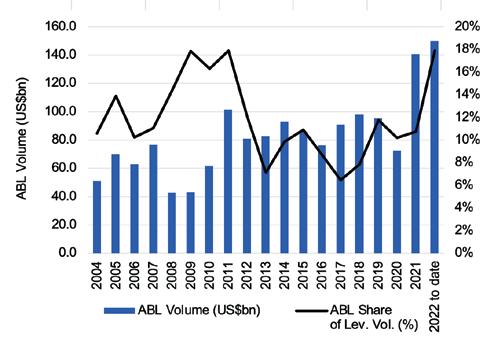
2022 ABL loan volume sets new record at over US$150bn
Refinitiv LPC
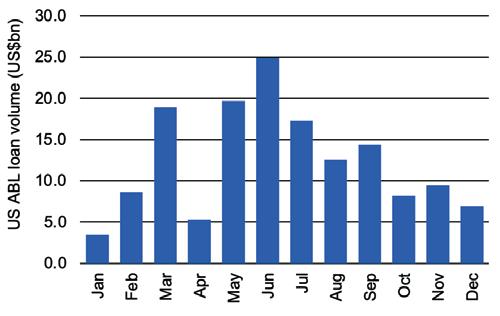
Post summer uptick fails to materialize amid recession fears
volume (Fig. 2). In fact, asset-based lenders were quite busy throughout 2022, logging record quarterly totals in each of the second and third quarters, before confronting a slowing deals calendar in the fourth quarter.
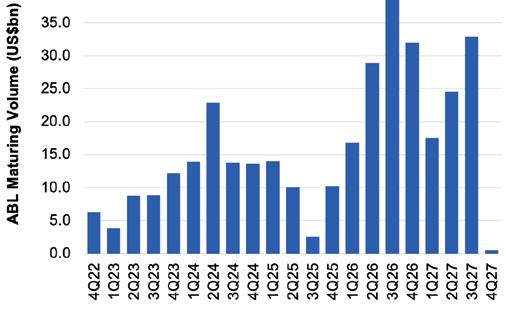
“It’s been a crazy year,” said one asset-based lender.
At the outset, sources said the market’s recession fears in 2022 are very different from those of the last major credit crisis in 2008-2009.
“2008 and 2009 were bad for everyone,” said one arranger. “These last 24 months have been different in that certain industries have faced recessionary pressures. At the same time, in 2021, many divisions saw investment for the longer term. Now you can see that winter is coming.”

Refinancings make up 73% of 2022 ABL pipeline
With less than two weeks left in the quarter, roughly US$105bn of leveraged loan volume has been sold down via the broadly syndicated loan market in 4Q22, off 65% compared to the same time last year. The asset-based loan market experienced similar pressure, completing roughly US$25bn of issuance during the quarter, down almost 45% quarter over quarter and 31% year over year (Fig. 3).
More frustrating, said lenders, is the fact that despite the limited supply of deal flow in 4Q22, there are few indications – at least for the moment – that new deal flow will emerge in the new year.
Just over US$40bn in new money asset-based loan assets was completed through the middle of December, up from the record US$35bn raised in 2021. M&A loan issuance represented less than 8% of new asset-based loan assets, however, as borrowers prioritized liquidity needs via a series of upsizings and cash flow to asset-based lending shifts. In turn, refinancings dominated the 2022 pipeline at US$109bn or 73% of total issuance (Fig. 4).
Fig.
Borrowers prioritize refresh of existing credits, pushing out maturities
As of the end of September, nearly 70% of outstanding asset-based commitments represented issuance maturing in 2025 and beyond (Fig. 5). More noteworthy, at over US$332bn, 2022 outstanding asset-based loan holdings are up 4% year over year to set a new record (Fig. 6) in addition to highlighting the growth of the market.
The caveat to the record holdings? Over 70% of the total represents assets issued over the last 18 months, thereby reducing the need for issuers to tap lenders in a rising rate environment, absent incremental needs.
“It seems like it won’t be a normal start to the new year,” said one lender. “We are starting to see some creepage of restructuring deals, most notably in the retail sector. The hope is that December sales look better than November sales. Regardless, banks will be more choosey in 2023.”
Outstanding ABL holdings at record high; Over 70% of total issued in last 18 months
Despite growing credit concerns and increased market volatility, pricing for asset-based loan credits remained stable throughout 2022, hovering at 172bp over TSOFR on average (Fig. 7) in a testament to the fact that for the right credits, the asset-based construct is often the best option, offering the lowest spread for the credit rating.

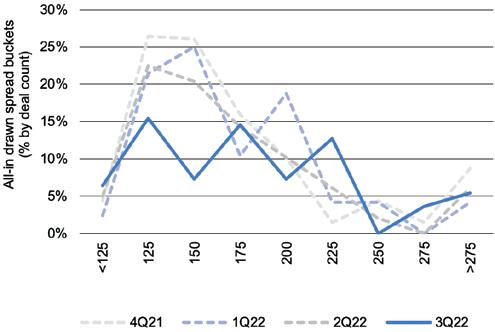
Still, not all deals are created equal. Just over 29% of deals priced at 125bp or 150bp over TSOFR in 3Q22, down from almost 48% at the end of 2Q22 (Fig. 8), as a number of tougher credits struggled to clear the market.
“You can’t make the return on spreads and outstandings today compared to 4Q21,” said one lender. “With the dearth of bond and TLB business, having usage on an ABL facility is not good given pricing, so there is renewed focus on wallet and ancillary business.”
Fig.
Average ABL pricing remains flat for much of year
Against this backdrop, by year end, sources said it was more difficult to be an arranger than it was in either 2Q22 or 3Q22.
“It started with the stress test which impacted some of the larger banks. Other banks needed to step up,” said one lender.
At the same time, larger holds become more complicated as a number of banks, including US Bank and BMO, faced pending acquisitions (of MUFG Union Bank and Bank of the West respectively), which inevitably will increase the size of assets on their books.
Very simply, availability of capital became more of a conversation and, concurrently, returns became more of a discussion point.
“In the middle of COVID, it felt like the world was falling over, and now we are back to normal living, and the market is gapping out,” said one arranger. “But when risk is off, risk is off. And when risk is on, people refocus.”
Fig. 8: US ABL pricing by bucket
Proportion of deals priced at 125 or 150bp over TSOFR declines in second half of year
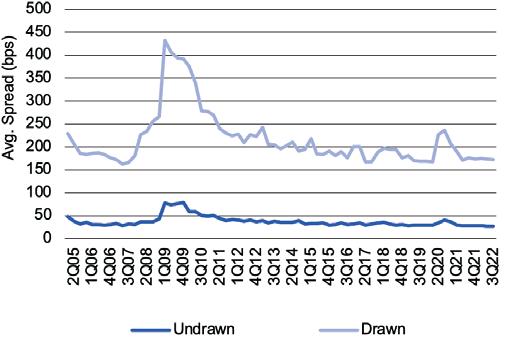
Maria C. Dikeos is a director of Analytics and head of Global Loans Contributions at Refinitiv LPC in New York. Dikeos runs a team of analysts in the US, Europe and Asia who cover analysis of the regional syndicated loan markets. She has a B.A. from Wellesley College and masters in international affairs from Columbia University.
Source: Refinitiv LPC
In this article, the author revisits cryptocurrency-based lending and how the 2022 UCC amendments provide welcome clarity to lending transactions involving digital assets
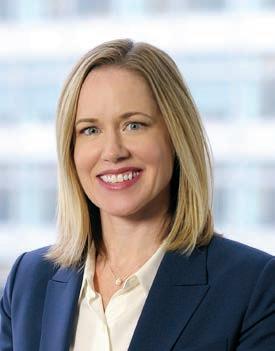
Much has changed in the world of digital assets since bitcoin’s debut in 2008. Blockchain and cryptocurrencies are no longer obscure technologies relegated to the outskirts of our financial systems; many industry participants and customers have come to view cryptocurrencies as mainstream financial assets. Cryptocurrencies and other digital assets, and the blockchain technology on which they are based, have taken on increasingly central roles in our financial systems. As digital assets and cryptocurrencies have grown in popularity, parties to financial transactions have sought to incorporate these assets into their deals. One area of the market that saw significant growth is cryptocurrency-backed lending. Borrowers with cryptocurrency assets sought to leverage their relatively illiquid crypto-assets for liquidity or for additional crypto-assets, including by using cryptocurrency assets as collateral in a financing transaction. Of course, financing structures are typically tailored to the specific operating and liquidity needs of borrowers and the use of illiquid assets, similar to cryptocurrencies, is not new to these financing structures. While there is a market for the trading of cryptocurrencies, certain adverse tax consequences of selling cryptocurrencies have resulted in crypto-owners using a buy-and-hold strategy. Lending against these types of assets unlocks value to these companies while avoiding these potentially adverse tax consequences.
In response to the changing financial landscape and borrowers’ interest in cryptocurrency-backed lending, more and more financial institutions and direct lenders ventured into the world of cryptocurrency financing over the last couple of years. While the market experienced a “crypto winter” for much of 2022, the market also saw signs of a “crypto winter thaw.” If there is less volatility in the crypto industry in 2023, it is possible that the use of crypto and other digital assets as collateral in traditional financing arrangements continues to be part of the lending landscape as companies continue to include cryptocurrencies and other digital assets in their business strategies. As further discussed below, the proposed 2022 amendments to the Uniform Commercial Code (“UCC”) to address emerging technologies could aid in the continued financing of digital assets in the years ahead.
Lenders that accept cryptocurrency collateral must, in addition to the credit and market risks they evaluate for all transactions, consider certain risks specific to cryptocurrencies. Some considerations are similar to those involved in traditional lending arrangements, including lender due diligence to ensure the borrower’s ability to repay and that the borrower owns the collateral, constraints on the borrower’s ability to access or use the collateral, complying with the operative regulatory regime, and assetspecific tax considerations. Due diligence is particularly important in cryptocurrency-backed financing transactions as lenders will want to ensure the borrower’s ownership of the assets securing the loan and, if applicable, that appropriate information and other security protocols are in place.
KIM DESMARAIS Jones DayAs noted above and as we’ve seen in 2022, cryptocurrencies are subject to significant fluctuations in value, including on a daily basis. While this is a significant factor in deciding whether to lend against these assets, lending transactions can be structured in a variety of ways to limit a lender’s risk of loss due to such volatility, as discussed in more detail below.
Similar to other asset-based loans that are tied to the value of the underlying collateral, when cryptocurrency is the sole or the most significant collateral, lenders may negotiate loan structures where the available amount is tied to a loan-to-value (or LTV) ratio and, if secured, outstanding advances are subject to margin calls. LTV ratios can be tested on a daily basis to capture changes in collateral values driven by price fluctuations in the underlying assets. If the LTV ratio falls below the compliance threshold, the borrower can be required to immediately either (i) pay down the loan, or (ii) place additional collateral in the collateral account, in each case to bring the LTV ratio back into compliance. These mechanics are useful when cryptocurrency is the only or main collateral due to its pricing volatility. Of course, there is still a risk of loss or non-payment on the amount of advances that exceed the value of collateral on any given date. With the volatility that we saw in the market in 2022, lenders might also consider requiring a certain percentage of the collateral to be non-crypto assets, such as a pledge of equity interests in the borrower or its subsidiaries or a pledge of material intellectual property, which assets could be realized upon by selling to another crypto- or digital asset-based company. Consideration could also be given to obtaining guarantees from
subsidiaries or parent companies of the borrower in support of the loan. Those guarantees could also be secured by non-digital assets of the guarantor. Taking into account market dynamics at the time, it might also be prudent for a lender to consider requiring a cash reserve account into which a minimum amount of cash is required to be maintained.
As with any secured financing, it is critical to ensure that the secured party has a valid and perfected lien over the collateral securing the financing. It is even more critical in crypto and other asset-based financings where availability is tied to the value of the collateral. Not only is it important to ensure that the lien over the collateral is enforceable against the borrower, but that it is also enforceable against any third party claiming an interest in the collateral, including customers of the borrower, other creditors of the borrower or a trustee in a bankruptcy of the borrower, and that the secured party’s lien will rank first in a priority fight with those other creditors.
Article 9 of the UCC is the law applicable to the creation, perfection and priority of liens in personal property assets that are subject to Article 9. Under Article 9 of most states, cryptocurrency is not a defined collateral type and, putting aside “money” for the moment, does not fit within any of the defined collateral types other than “general intangibles”. Under Article 9, a secured party can perfect its lien in general intangibles of the borrower by filing a UCC-1 financing statement describing the general intangibles in the central office of the state where the borrower is located or, in the case of individuals, where the borrower resides.1
Perfection by filing, however, is not the only way to perfect a lien in cryptocurrency collateral under the UCC of most states and a “workaround” of sorts has been used to perfect such lien by “control”. Under Article 8 of the UCC, a lien on “financial assets” that are held with a “securities intermediary” in a “securities account” can be perfected by control, including by the secured party, the “securities intermediary” and the borrower entering into a control agreement.2 Perfection by “control” will give the secured party priority over any other creditor or lienholder claiming an interest in the “financial assets” that has perfected by filing.3 As a result, parties to crypto-based lending transactions will typically (i) agree to treat the “cryptocurrency” as a “financial asset” under Article 8 of the UCC, (ii) have the cryptocurrency collateral held in a “securities account” with a custodian or other “securities intermediary” that is in the business of holding cryptocurrency collateral for others and is acting in that capacity in the relevant transaction and (iii) enter into a control agreement with the custodian pursuant to which the custodian agrees to comply with entitlement orders on the securities account originated by the secured party without the consent of any other person, thus perfecting the secured party’s lien by control.4
Returning to the issue of cryptocurrency as “money” under the UCC, “money” is defined as “a medium of exchange currently authorized or adopted by a domestic or foreign government.”5 Prior to 2021, no
cryptocurrency fit this definition. However, El Salvador in September 2021 and the Central African Republic in April 2022, officially recognized Bitcoin as legal tender in their respective countries. As a result, questions emerged in the market whether Bitcoin was now “money” as defined in the UCC and if the “perfection by possession” rules thus applied to Bitcoin, which would be practically impossible for an intangible currency. While the proposed 2022 Amendments to the UCC discussed below address this issue, market participants will need to continue to consider the issue prior to the adoption of the 2022 Amendments and it would be prudent to follow the workaround noted above for perfecting a lien in Bitcoin by control under Article 8 of the UCC instead of by filing.
Another point to consider is that while possession of the private key will give the secured party “practical” control of the relevant cryptocurrency and the ability to easily liquidate or otherwise enforce against the cryptocurrency, possession of the private key is not a way to perfect a lien under the UCC. Custodian arrangements have thus become an essential component of lending in the digital asset space. An added benefit to these types of arrangements is that lenders are able to take a perfected security interest in cryptocurrencies without having to alter the existing rights of the borrower to such cryptocurrency assets.
The laws of most states currently governing transfer of property rights (both ownership and security interests) that consist of, or are evidenced by, electronic records have not been updated to keep pace with evolving technological developments. This issue is particularly notable with respect to virtual currencies, non-fungible tokens and intangible money, including virtual fiat currency that has been authorized or adopted by a government. As a result, questions have emerged among market participants about how security interests can and should be perfected in cryptocurrencies and other digital assets. Furthermore, there are gaps in the current version of the UCC of most states with respect to how these interests can be transferred or monetized, and how owners of these assets can be protected from adverse property claims.
To address these gaps and lack of clarity, in 2019, the Uniform Law Commission (“ULC”) and American Law Institute (“ALI”) appointed a joint drafting committee (the “Joint Committee”) to consider and formulate proposed amendments to the UCC to accommodate emerging technologies. On May 18, 2022, the ALI6, and on July 13, 2022, the ULC7, approved the proposed amendments to the UCC8 (the “2022 Amendments”), which cleared the way for the 2022 Amendments to be sent to the U.S. states and territories for adoption. In particular, the 2022 Amendments add a new Article 12 regarding sales of, and security interests in, “controllable electronic records” (or “CERs”), as well as “controllable accounts” and “controllable payment intangibles” that are evidenced by a CER. While the term “CER” would include technologies that exist today, such as Bitcoin, Ether and NFTs, it has been designed to be flexible enough to also pick up technologies that are developed in the future. The 2022 Amendments also make changes to Article 9 of the UCC to address and incorporate CERs as a new asset
category, thus establishing clear perfection, priority and choice of law rules for transactions where the CER is pledged as collateral. Moreover, the 2022 Amendments provide legal assurance as to when a transferee (which includes a secured party) of a CER acquires its interest therein free of conflicting property claims.
Let’s first consider the “take free” rules of the 2022 Amendments. Under these rules, a transferee of a CER will take its interest in such CER free of a conflicting property claim and will take all rights that the transferor has in the CER if the transferee is a “qualifying purchaser”.9
To be a “qualifying purchaser”, the transferee must: (i) acquire the CER in a transaction that constitutes a “purchase” (within the meaning of Article 1 of the UCC, and which includes grants of liens), (ii) have control of the CER, (iii) give value (within the meaning of Article 3 of the UCC), (iv) act in good faith, and (v) not have notice of a property right claim in the CER.10 Under the 2022 Amendments, a person has “control” of a CER if that person: (i) has the power to avail itself of substantially all the benefit from the electronic record, (ii) has the exclusive power to prevent others from availing themselves of substantially all the benefit from the electronic record, and (iii) has the exclusive power to transfer control of the electronic record to another person or cause another person to obtain control of another controllable electronic record as a result of the transfer of the electronic record.11 In addition, such person must have the power to readily identify itself to a third party as having the above specified powers (i.e., via a cryptographic key or other identifying number).12 If such transferee is a secured party and it obtains control of the CER, it will have priority over another secured party that does not have control, including a secured party that has perfected its security interest solely by the filing of a financing statement.13 It should also be noted that, under the 2022 Amendments, the filing of a UCC-1 financing statement is not by itself notice of a property claim to a CER.14 This is important since, as noted above, a good-faith purchaser for value of a CER that obtains control of the CER without notice of a prior security interest or other claim of a property interest in such CER will be a “qualifying purchaser” and will be afforded greater rights than the transferor of such CER.
The 2022 Amendments also address the workaround noted above under current Article 8 for perfection by “control” of CERs maintained in a “securities account” with a “securities intermediary”. Article 8 has been amended to clarify that a CER is a “financial asset” for purposes of Article 8 if Section 8-102(a)(9)(iii) applies.15 As a result, if a customer and a securities intermediary agree that CERs of the customer maintained in a securities account with the securities intermediary are “financial assets” under Article 8, those CERs are considered investment property for purposes of the perfection by control rules under Article 8.16
The 2022 Amendments also address the workaround noted above under current Article 8 for perfection by “control” of CERs maintained in a “securities account” with a “securities intermediary”. Article 8 has been amended to clarify that a CER is a “financial asset” for purposes of Article 8 if Section 8-102(a)(9)(iii) applies.
Now, back to “money” under the UCC. The 2022 Amendments solve for the conundrum noted above due to Bitcoin being designated legal tender in El Salvador and the Central African Republic by amending the definition of “money” to exclude “an electronic medium of exchange, or digital currency, that existed before a government adopted such pre-existing medium of exchange as legal tender”.17 This means that existing digital currencies, including Bitcoin, can never constitute “money” under the UCC, but they could be a CER. A new term “electronic money” is also introduced that is defined in the amendments to Article 9 simply as “money in electronic form.” Under the new rules in Article 9, the only way to perfect a security interest in electronic money as original collateral is by “control” and the mechanism for control is the same as that for CERs noted above.18 As a result of these amendments, it is clear that digital currencies (including Bitcoin) that constitute electronic money or a CER can be perfected only by “control” and not by “possession” under the UCC.
Lenders and borrowers will want to watch the adoption of the 2022 Amendments, including to determine whether to amend existing or form loan documents to ensure that they continue to work under the changing legal landscape and to ensure compliance with the new choice of law rules applicable to CERs.
Looking to the year 2023 and beyond, we expect the digital asset

industry to continue to evolve and mature, both from a financing and regulatory perspective, and it will be important to continue to monitor legal and practical developments.
First, we expect developments in the regulatory landscape governing cryptocurrencies and other digital assets to continue. Any such developments will likely create additional complexity, which could create short-term difficulties for holders, investors, and lenders. On balance, however, we expect regulatory developments to further spur predictability and stability in the cryptocurrency and digital asset space, which will likely be a net positive for the ecosystem.
Second, we expect to see new developments as the digital asset industry matures. Part of that maturity will involve developing strategies to address large-scale economic downturns and financial distress, which the digital asset industry has had little experience with and which we saw tested in 2022. Although the cryptocurrency market may rebound from the 2022 “crypto winter”, it remains to be seen how a large-scale and sustained economic downturn will impact the overall crypto market.
Third, we expect updates to state law, including as states begin adopting the 2022 Amendments, and federal law to spearhead new and unanticipated lending and collateral structures. We recommend monitoring such updates along with the impact that subsequent bankruptcy and out-of-court workouts might have on the market and on the lending and collateral structures employed prior to such state and federal law changes.
The views and opinions set forth herein are the personal views or opinions of the author; they do not necessarily reflect the views or opinions of the law firm with which the author is associated.
Kim Desmarais is a partner in the New York office of Jones Day. She represents banks, private debt funds, commercial finance companies and other institutional lenders in a variety of financing transactions, both cross-border and domestic, across a broad range of industries with a particular focus on leveraged finance and asset-based lending transactions, workouts and restructurings. Desmarais has extensive experience advising on collateral and other secured lending issues and is a Fellow of the American College of Commercial Finance Lawyers. She can be contacted at 212.326.3414 or kdesmarais@jonesday.com.
Kim would like to thank Jones Day associates Andrew Butler and Josie Shawver for their assistance.
1. UCC § 9-310; 9-307; 9-501.
2. UCC § 9-106(a); 8-106(d).
3. UCC § 9-328.
4. UCC § 8-102(a)(9)(iii); 8-106(d).
5. UCC § 1-201(a)(24).
6. See https://www.ali.org/projects/show/uniform-commercial-code/.
7. See https://www.uniformlaws.org/discussion/ulc-2022-annualmeeting-highlights#bm2d8310fc-6e53-40e2-a082-22bdb5c1ab60.
8. See https://www.uniformlaws.org/viewdocument/final-act164?CommunityKey=1457c422-ddb7-40b0-8c76-39a1991651ac&ta b=librarydocuments
9. See 2022 Amendments § 12-104(e).
10. See 2022 Amendments § 12-102(a)(2).
11. See 2022 Amendments § 12-105.
12. See 2022 Amendments § 12-105(a).
13. See 2022 Amendments § 9-326A..
14. See 2022 Amendments § 12-104(h).
15. See 2022 Amendments § 8-103(h).
16. See 2022 Amendments § 8-102(a)(9)(iii); UCC § 8-106.
17. See 2022 Amendments § 8-102(a)(9)(iii); UCC § 8-106.
18. See 2022 Amendments § 8-102(a)(9)(iii); UCC § 8-106.
 BY IAN FREDERICKS, DOUG JUNG AND DOMINICK KEEFE
BY IAN FREDERICKS, DOUG JUNG AND DOMINICK KEEFE

In this article, we discuss how the increasing relevance of Amazon sellers in the retail space has created the need for an approach to field exams, appraisals and liquidations that incorporates a deep understanding of the unique nuances associated with conducting business within the world’s largest online marketplace.
As Amazon has grown to become the world’s largest online marketplace, the need to offer financing solutions and, consequently, a field exam and appraisal product, has grown with it. For all existing and prospective Amazon sellers, securing financing has traditionally posed challenges, given the industry norm of ascribing zero value to inventory housed in Amazon’s network. This was largely due to the lack of control associated with Amazon and the many rules it imposes upon its sellers. Together, the lack of control and many rules present a number of variables that create significant underwriting challenges for asset-based lenders and inexperienced liquidators. However, despite these challenges, the increased prevalence of Amazon sellers requires a different perspective that has been formed and consistently refined to keep pace with Amazon’s changes.
Amazon accounts for nearly 40% of all US retail e-commerce sales, a larger share of the pie than Walmart, eBay, and Wayfair combined, and it adds, nearly 4,000 new sellers to its platform daily. Approximately 22% of Amazon’s total revenue is attributed to its more than two million third-party sellers. Of those, sellers can leverage three different methods of selling: Fulfilled by Amazon (FBA), Fulfilled by Merchant (FBM), and Seller Fulfilled Prime (SFP). Under FBA, sellers send their inventory to Amazon-operated fulfillment centers, where Amazon then manages all picking, packing, shipping, customer service, refunds, and returns on behalf of the seller. All FBA sellers have the Prime badge. In contrast, FBM sellers list their
products on the same Amazon marketplace, but manage all storage, shipping, and customer support independently of Amazon and are ineligible for Prime. SFP is more similar to FBM, though it allows sellers to deliver directly to domestic Prime members, so long as these sellers are able to adhere to the Prime standard, which includes free two-day delivery among other things. Across all three selling programs, the seller retains title to the inventory, even when the inventory is physically sent to Amazon, the seller still owns it until sold. Importantly, these three programs are not mutually exclusive, and it’s not uncommon for Amazon sellers to leverage multiple, adding an additional consideration to the appraisal, field exam, and liquidation consideration.
Amazon Holds the Cards in a Liquidation
While Amazon allows liquidation of inventory through its website and even provides a variety of tools to assist in the sale of excess and underperforming inventory, the nature of the activity permitted on the marketplace is much different and more restrictive than how traditional Going Out of Business (GOB) events are typically conducted.
During a traditional brick-and-mortar or e-commerce GOB event, for example, the ability to drive

use of highly promotional language and messaging such as “EVERYTHING MUST GO” or “STORE CLOSING.” Not only does Amazon prohibit this kind of language, but, since it requires its sellers to adhere to their 30-day return and refund policy, for example, an “ALL SALES FINAL” strategy cannot be implemented as matter of procedure. This is in stark contrast to a typical retail liquidation, where 100% sell-through of inventory is often guaranteed.
The inability to fully control the messaging and sales strategy on Amazon means that inventory net orderly liquidation values (NOLVs) and liquidation recoveries are likely to come in lower than their traditional brick-andmortar or eCommerce counterparts.

Additionally, unlike these other, more familiar liquidation channels, Amazon has a comprehensive and relatively complex set of rules and policies that require careful attention and must be followed. One mistake or issue, whether it’s intentional or not, can cause a retailer to breach compliance and, ultimately, lose the ability to sell through Amazon until the violation is resolved.
Some examples of these violations include pricing a product unfairly, providing an inaccurate product description, and aggressively discounting the same product on another website or marketplace, but not Amazon.
The propensity for violations is, understandably, greater during the course of a liquidation. It’s not uncommon for sellers to experience capacity limitations related to shipping and packing, and ensuring inventory arrives to Amazon warehouses or customers on time. This is especially true during a bankruptcy, after a company has experienced financial difficulties and during a liquidation when the goal is to sell through as much inventory as possible at the highest value possible. As inventory selection dwindles, and discounting increases, albeit in much smaller increments on Amazon than other sales channels, it can be challenging to meet the shipping speeds and customer service requirements
demanded by Amazon, especially for SFP Sellers. In the event of slippage, results can be negatively impacted. For example, if a seller’s rating drops too low, sellers may have to discount further to win the “Buy Box,” also known as the “Featured Offer.” Simply put, winning the Buy Box means the customer is buying your product when they click “Add to Cart” or “Buy Now.” Given these risks, it is imperative to monitor several key metrics before and during an Amazon liquidation, including, but not limited to, Inventory Performance Index, buy box eligibility, inventory heath (age, unit counts, etc.), sales history, product conditions, seller rating, inactive SKU counts, and more. And, lenders need partners who have experience with the variables impacting these metrics – positively and negatively.
Despite the many nuances, differences, and complex challenges associated with Amazon, lending to an Amazon seller and utilizing Amazon as a sales channel during liquidations are each viable options when a proper understanding of risk and appropriate monitoring are both present.
Diligence unique to Amazon sellers would include analyzing key performance metrics, including return rates, and how the seller exploits Amazon metrics to optimize their sell through. Inventory reporting accuracy and timeliness can also be evaluated as well as compliance with Amazon’s many requirements. These and other Amazon seller specific procedures should be performed.
As mentioned previously, when Amazon is one channel through which a retailer sells its inventory, this inventory has historically been treated as ineligible, and Amazon excluded as a recognized sales channel for underwriting purposes. Clearly,
As mentioned previously, when Amazon is one channel through which a retailer sells its inventory, this inventory has historically been treated as ineligible, and Amazon excluded as a recognized sales channel for underwriting purposes. Clearly, this approach to lending disadvantages Amazon-centric sellers.



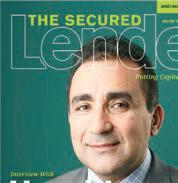


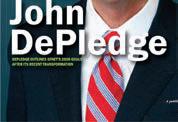
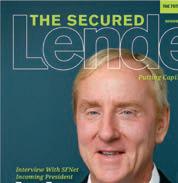


The industry’s most trusted resource for credible news published for almost 30 years, with over 6000 readers per issue, SFNet’s The Secured Lender has an audience that is engaged, refers to the magazine often and 47% of respondents to a recent survey have taken action as a result of reading advertisements in the publication.

The power of buzz is still alive in print

7 out of 10 B2B readers say they spend more time with industry related print publications than with mainstream business or consumer print magazines, according to the Association of Business Information & Media Companies.
Put your capital to work with SFNet today. Contact James Kravitz, Business Development Director at (917) 881-1247 or jkravitz@sfnet.com.
this approach to lending disadvantages Amazon-centric sellers. From our perspective, the many unique factors that impact NOLVs in the Amazon environment – including imposed fees, ratings, the restriction against aggressively marketing the urgency or finality of sales, the requirement to offer returns, and the potential of losing the right to sell at any point in time during or outside the course of a liquidation – demand a new way of approaching asset appraisals for these sellers that includes, among other things, a commitment to more frequent field exams and collateral updates. A specialized appraisal report that incorporates key metrics that have a positive or negative impact on NOLVs as well as variables to monitor is critical for any lender.
Similarly, conducting liquidations that involve Amazon as a channel requires highly specialized knowledge and expertise that is not widely accessible. From optimizing the timing of efforts around Amazon’s seasonally adjusted fee structure and navigating policies to minimize the chance of suspension, to protecting buy box eligibility and proactively developing a complementary disposition strategy to address the likelihood of less than 100% sell through... such effort must be well planned and coordinated at every step.
At Hilco, we have more than 35 years of retail inventory field exam, appraisal and liquidation experience across retail and consumer goods businesses. Our Hilco Retail Group also has hard to find, real-world experience in successfully assisting third-party sellers and aggregators, and conducting the largest Amazon related seller liquidations. This breadth and depth of expertise has led to our development of an innovative new appraisal product and field exam approach, which are now being used by lending and retail clients, and from which many are already benefitting.
As with any other borrower, in order to make an asset-based loan to an Amazon seller, a lender must have confidence that its collateral – the inventory – can be effectively liquidated if necessary. Some traditional liquidators will be quick to tell you that this can be done “easily” for Amazon sellers. Others will tell you that it “can’t” be done at all. At Hilco, we are actively engaged on both sides of this complicated equation on a regular basis. And we are here to tell you that it can, in fact, be done, but that a successful liquidation must be planned and executed with a high degree of precision and expertise.
Hilco’s Retail Group offers broad and deep expertise in all retail sectors. Our seasoned professionals deliver a wide range of analytical, advisory, asset monetization, and capital investment solutions to help define and execute client strategic initiatives. We encourage both asset-based lenders and Amazon sellers to contact us and learn more about our team’s experience and offerings in this highly specialized area,
including how we may be able to assist with either a current or anticipated field exam, appraisal or liquidation need.
Ian Fredericks is president of Hilco Merchant Resources. He joined Hilco in 2011 after a successful career as a stressed and distressed Mergers and Acquisitions and Corporate Restructuring attorney. Over the course of his career, Ian has negotiated and closed transactions involving tens of billions of dollars of assets. Indeed, in 2017, Ian was a recipient of the M&A Advisor’s Emerging Leaders award.
Dominick Keefe is vice president Hilco’s Retail Group responsible for identifying, sourcing, and executing transactions on behalf of Hilco and its subsidiaries, including ReStore Capital, Hilco’s consumer and retail investment platform and ReStore for Retail, Hilco’s SaaS for retail operations. He can be reached at DKeefe@hilcoglobal.com or 847-418-2094.
Doug Jung is managing director, diligence services, for Hilco Valuation Services. He has over 35 years of experience with diverse diligence, field exam, audit, credit, management, advisory, finance and investigations. During his lending career, Doug has performed or managed hundreds of specialized diligence assignments or ABL field exams annually. He has hired, trained or worked with well over a hundred field exam professionals and staff. He can be reached at 646.321.6616 or djung@hilcoglobal.com.
June 12-14, 2023 | Vir tual
Presented in conjunction with:
The Secured Finance Foundation has joined forces with NYU Stern Executive Education to bring our members a multi-faceted learning experience taught by NYU faculty coupled with real-world secured nance applications.



• Perspec tive – individuals will be able to examine the meaning of leadership from many perspectives
• Ac tion – individuals will be able to develop a personalized path towards translating leader ship into effective action
• Organization Dynamics – individuals will take a deep dive on profe ssional dynamics, power spheres, and how in uence, collaboration, teamwork and networking all play a par t in becoming a quality leader


















When it was time for World of Watches to monetize aged and excess inventory, Hilco Wholesale Solutions helped by purchasing more than 100,000 units up-front. Find out how our custom capital solutions, purchase and sale strategies can help your aged and excess goods fly off the shelf at optimal prices, without risk or channel disruption. Contact Gary Epstein at 847.418.2712 or gepstein@hilcoglobal.com.




